The Loop at Forest Dunes, which was Tom Doak’s third public course in the state (but is only one that’s still open), is certainly the most original course in the state and offers an experience unlike any other. Most notably, it’s the first reversible 18 hole course in the country (and one of the only ones in the world), meaning that you start near the eighteenth green, play clockwise to the first green one day, then start by the eighteenth green and play counterclockwise, with the first green being the previous day’s seventeenth and the previous day’s first being the seventeenth green today. It’s easiest to conceive if you think of the course as being a big circle or being straight out for nine holes then back for nine, playing into each green from exactly or close to the opposite direction from the previous day. The Loop is closer to the former, but with a few turns in the middle so that the direction of play is not always close to 180 degrees from the previous day.
The other notable thing about The Loop, which is of more practical significance for how you play the course, is that it’s the only public course in Michigan that I’ve played that really plays like a links course. What I mean by this is that it’s the only course with very firm fairways and greens surrounded largely by short grass, where your drive will likely run a few dozen yards when it hits the ground and short shots around the green are best played as a bump-and-run or a putt. The course plays like this because it’s on sandy soil and the fairways are entirely fescue grass, which grows better on sand than other, more nutrient-demanding grasses. The ground is almost always firm because it drains fast and the fescue can tolerate these dry spells better than other types of grasses. When it’s dried out—which again is most of the time because it drains fast—the fairways become almost like playing on concrete. You can even hear the firmness. Go out on one of the fairways in dry conditions and drop your putter from knee-height; the resonance is unlike anything you’ll hear if you perform this test on any other Michigan public course (or any course I’ve played that isn’t the Kingsley Club, which also has fescue fairways).
But it’s the former element, the reversibility, that raises the question about how to review The Loop. You could review it one way around then the other, pick a direction and review each hole playing to that green before moving onto the next, or pick a direct and review the hole playing down that corridor then the hole playing the other direction down that corridor, so reviewing the course 1-18 for the first direction and 18-1 for the other. It also creates difficulty for the magazines; do they rate The Loop as one course or two? I don’t have to worry about the latter (they’re close anyway), but I’ll review it as two courses, so 1-18 each way, but with references back to the first routing when I review the second.
The Black Course
The Loop’s two directions are called the Black (clockwise) and Red (counterclockwise). I’ll start with the Black because it’s the first one I played on my first visit right after the course opened in late summer 2016 (when I took these pictures). The course played similarly for my second visit in summer 2020, but the greens were softer and a bit slower, making it a bit more playable. The fairways were equally bouncy but were obviously more grown in for my second visit.
If you’ve been to Forest Dunes before and only played the original course, you’ll notice when standing on the first tee how different The Loop looks. It’s much more rustic looking, with wide fairways, no rough, and fewer (and less white) bunkers. The first hole on the Black is one of the best; a long par 4 with a typically wide fairway, but one with encroaching junk on the left if you pull it. Although the fairways are wide, like on a links course, you have to be very careful with the line you take because the ball can roll 50 yards. Right here is safer, but the further right you go, the blinder your shot is. The green is completely surrounded by short grass, encouraging a run-up shot—and really demanding it because of the likely distance of your approach. Another feature of this green that you’ll see throughout the course is that it’s convex, rolling away when you get to the edges, especially at the back. This feature of the greens is the course’s greatest source of challenge (and frustration for those with weak short games).
The other notable thing about The Loop, which is of more practical significance for how you play the course, is that it’s the only public course in Michigan that I’ve played that really plays like a links course. What I mean by this is that it’s the only course with very firm fairways and greens surrounded largely by short grass, where your drive will likely run a few dozen yards when it hits the ground and short shots around the green are best played as a bump-and-run or a putt. The course plays like this because it’s on sandy soil and the fairways are entirely fescue grass, which grows better on sand than other, more nutrient-demanding grasses. The ground is almost always firm because it drains fast and the fescue can tolerate these dry spells better than other types of grasses. When it’s dried out—which again is most of the time because it drains fast—the fairways become almost like playing on concrete. You can even hear the firmness. Go out on one of the fairways in dry conditions and drop your putter from knee-height; the resonance is unlike anything you’ll hear if you perform this test on any other Michigan public course (or any course I’ve played that isn’t the Kingsley Club, which also has fescue fairways).
But it’s the former element, the reversibility, that raises the question about how to review The Loop. You could review it one way around then the other, pick a direction and review each hole playing to that green before moving onto the next, or pick a direct and review the hole playing down that corridor then the hole playing the other direction down that corridor, so reviewing the course 1-18 for the first direction and 18-1 for the other. It also creates difficulty for the magazines; do they rate The Loop as one course or two? I don’t have to worry about the latter (they’re close anyway), but I’ll review it as two courses, so 1-18 each way, but with references back to the first routing when I review the second.
The Black Course
The Loop’s two directions are called the Black (clockwise) and Red (counterclockwise). I’ll start with the Black because it’s the first one I played on my first visit right after the course opened in late summer 2016 (when I took these pictures). The course played similarly for my second visit in summer 2020, but the greens were softer and a bit slower, making it a bit more playable. The fairways were equally bouncy but were obviously more grown in for my second visit.
If you’ve been to Forest Dunes before and only played the original course, you’ll notice when standing on the first tee how different The Loop looks. It’s much more rustic looking, with wide fairways, no rough, and fewer (and less white) bunkers. The first hole on the Black is one of the best; a long par 4 with a typically wide fairway, but one with encroaching junk on the left if you pull it. Although the fairways are wide, like on a links course, you have to be very careful with the line you take because the ball can roll 50 yards. Right here is safer, but the further right you go, the blinder your shot is. The green is completely surrounded by short grass, encouraging a run-up shot—and really demanding it because of the likely distance of your approach. Another feature of this green that you’ll see throughout the course is that it’s convex, rolling away when you get to the edges, especially at the back. This feature of the greens is the course’s greatest source of challenge (and frustration for those with weak short games).
The second is a medium length par 3 where you’ll just want to carry the first bunker, which is about 15 yards short of the green to run the ball on unless you have a high ball flight—although when it first opened in 2016, even the high ball hitter needed to give it room to run on because it was so firm.
The third is a very difficult long par 4 with junk and a fairway bunker up the left side that should be challenged for the best angle to the green. The green is built-up into a left-to-right slope with a steep drop-off right. It’s best to land just short left of the green (over the small waste bunker) and allow it to feed on.
Four is a short par 4 that’s very wide-open off the tee. So wide open that you should suspect that something’s up. It is; the green is narrow and deep, with mounds front right (plus a bunker) and front left that make it very difficult to play an approach shot that isn’t in the center-left of the fairway. If you’re in the correct portion of the fairway, you could bump-and-run or even putt on if you’ve hit it fair enough. This hole is Doak’s favorite of the 36 (according to the yardage guide) and what The Loop is all about—using the angle of the green and the shaping of the green complex to determine the strategy of the hole. You always have to think backward from the green at The Loop and even though there aren’t a lot of fairway bunkers to cause trouble for your drives, the green complexes (and the firmness is a crucial element here) create all the strategy that you need.
Five is a medium long par 3 to one of the larger and most undulating, but least convex greens on the course. One criticism that I have of The Loop is that there aren’t more greens like this one. A few too many of the greens are too small and too crowned for my liking—there are several holes where you could go back-and-forth and just give up (although not if you’re careful about your misses). This gently rolling piece of land, the firm conditions, and I would think the reversibility would lend themselves well to some very large undulating greens—similar to St. Andrews (also originally reversible and a model for this course).
Six is a short par 5 without much trouble until you reach the green, which is very shallow and crowned on its left side. Here the main interest is in the difficulty of the shots around the green rather than in the strategy it sets up from the tee. The seventh is a short par 4 with a deep green perched into a right-to-left slope and a bunker in the center-left of the fairway. You could try to drive the green but if you lay-up, I think the best place is out to the left. The yardage guide says that the best approach is straight on, which I take to mean from the right side as that plays into the deepest aspect of the green. But from the center-left, you play into the primary slope of the green, which makes it easier to stop the ball.
After a short par 3 fronted by bunkers, we come to the long par 4 ninth. The main thing here is to hit as long a drive as you can. If you don’t hit a long drive, you’ll have to contend with bunkers in the left side of the lay-up area. The tenth is a very long par 5 which has a bit of an awkward drive thanks to a tree and bunker on the left, but there’s plenty of room over these and the rest of the way to the green.
The drive on the eleventh raises my other major criticism of The Loop, which is that there’s a bit too little interest off of some of the tees, especially from an aesthetic standpoint. Here, you gradually up a hill into a very wide fairway. I know that I mentioned before that this suggests that Tom Doak is up to something and that the green dictates the strategy, but, if only for aesthetic purposes, it’d be nice to have something out there that helps frame the drive. The green here is wide and shallow, with plateaus left and right and and a swale running front-to-back through the center. You’ll want to play to the high left if the flag is left and up the right if the flag is right, but I think a fairway bunker near the apex of the fairway on the left and a bigger one (waste bunker would be good) shorter off the tee up the right would help frame the hole and make you think a bit more about how exactly you want to hit the drive (and both would improve the eighth hole on the Red Course going the other way).
The medium length par 4 twelfth hole is one of my two favorites of the 36 (incidentally, the twelfth on the Red, playing to the narrow Black sixth green is my other). I think that part of it is that this is one hole where fairway bunkers make you think about the drive. There’s a shorter one center right and a longer one up the left. The best angle is from the right because the green is deepest from this angle. So the optimal drive carries this. The further left you play, the tougher the angle becomes.
The thirteenth is an excellent long uphill par 3 to what’s probably the largest green on the course—although you can’t tell from the tee (you just see the front edge). The ground slopes gradually right-to-left which suggests that you should land your ball a bit short right and let it feed left. You definitely don’t want to carry it too far on this line because if you miss the green right or long right, everything runs away to the right into junk. This hole reminds me a lot of several par 3s that I love in England, where architects used par 3s to climb hills and often included one where you needed to hit driver, but could run it on the green.
Fourteen is a beautiful long par 4 over a ridge and fairway bunker left to a semi-blind fairway. The approach to the green reminds me a bit of a reverse image of the fifth at Pinehurst no.2—gradually uphill with a waste bunker short right. Both greens are fairly narrow and have steep drop-offs on the low side (right here, left there). The fifteenth is a fairly long par 3 to a big, open, but undulating green.
The sixteenth is medium long par 4 and one of the toughest at The Loop. This 16 Black/3 Red corridor is one of the narrowest on the course, with several fairway bunkers on the right (left). The green is completely open in front but is another small, double plateau green like the eleventh, this time with the plateaus front and back. Any miss that isn’t short runs away from the green leaves a very difficult pitch or putt.
There’s a waste bunker left on the fairly short par 5 seventeenth, but it’s wide open past it all the way to the green. The medium length par 4 eighteenth runs uphill and slightly right around several fairway bunkers with another one on the left right where you’d like to land your ball. I mentioned earlier that the course could use a few more fairway bunkers for framing and strategy but there are a few holes that have them. The green again is open, but runs away to the back.
The Red Course
Starting from just left of where we just finished, the first on the Red goes back down the eighteen Black fairway and the course runs in a counterclockwise direction. This drive is much easier than that on the Black going down the same corridor. We can easily carry (and can’t even see most of) the aforementioned fairway bunkers and land in a very wide area, although there are two bunkers (one huge, one small) just short of the elevated green. It’s a fairly easily opening hole—but be sure to get your second all the way up onto the green.
Starting from just left of where we just finished, the first on the Red goes back down the eighteen Black fairway and the course runs in a counterclockwise direction. This drive is much easier than that on the Black going down the same corridor. We can easily carry (and can’t even see most of) the aforementioned fairway bunkers and land in a very wide area, although there are two bunkers (one huge, one small) just short of the elevated green. It’s a fairly easily opening hole—but be sure to get your second all the way up onto the green.
The second is, like its counterpart Black seventeen, a par 5. This one is quite a bit tougher. The fairway winds between the native vegetation and the hole turns left for the second. You have to carry vegetation and a bunker about 125 short of the green, which is the double plateau from sixteen Black, but now the plateaus are left and right. The shallow angle and slopes make the approach very difficult, especially if you lay-up out to the right.
The third is, like sixteen Black, a medium length par 4 to a narrow fairway. Although the hole doglegs gradually left and the left side shortens the hole, the right side of the fairway is a bit more open and the shot from here is clearer. Four Red is a medium long par 3 with a front right to back left diagonal green. Use the ground short and right to run the ball down the green.
Five is an excellent long par 4, uphill and doglegging slightly right around two fairway bunkers. The green is large, open in front, and not too much trouble as long as you don’t miss long or right. Six is a very short par 3–100 yards shorter than its counterpart Black thirteen. But it’s very difficult because the green is shallow, runs away down a pretty good hill, and is fronted by bunkers. Despite the short length, the firm conditions create opportunities for Xs.
The seventh is an incredibly wide-open short par four. I hit what I thought was a terrible pull into the neighboring thirteenth (six Black) fairway, only to have a perfect angle to the green. This hole could use a fairway bunker or two out to the left to challenge the player who’s attempting to open up this optimal angle.
And like the seventh and its counterpart eleven Black, the long par 4 eighth could use a fairway bunker or two. The fairway goes over a rise then doglegs to the left down a hill. The approach is back uphill over a strip of native vegetation. This is one of the most beautiful approaches on the course, but I think that the hole would benefit from the fairway bunkers that I suggested for its counterpart eleven Black—one or two high right to catch blocks and for framing, one waste bunker left. The latter would be blind from this angle, but would be a nice unpleasant surprise for the player who got greedy and tried to cut too much off the left. You could even leave the one on the right blind for another unpleasant surprise as this hole is less in need of visual framing than eleven Black.
Nine Red is a very long par 5 and a bit more interesting than its counterpart, the just-as-long Black ten. There’s a big waste bunker that you have to skirt or carry on the right and the second shot presents an interesting task: you can see that there are green side bunkers right and an approach from the right side won’t be great. But there’s a series of fairway bunkers encroaching from the left up to 150 yards short of the green that protect it from this (better) angle. If you go too far on this line, you can end up in the cross bunkers on Black nine.
Leave your drive up the left on the long par 4 tenth for an open approach around the front right green side bunker and use the gently left-to-right sloping ground to feed the ball onto the green (avoiding the left fairway bunker 50 yards short). Eleven is a long par 3 with a deep receptive green where you can run it in short or use the slope on the left to feed it on.
As I mentioned above, the two twelfth holes are probably my two favorite on the course. If you don’t get lost trying to find the tee (back up the hill to the right), you face a drive over an eye candy bunker and native vegetation to a saddle-shaped fairway that angles short left to long right. You’ll want to lay back for two reasons; (1), the fairway narrows about 80 yards short of the green with the native vegetation encroaching on the left and (2), the green gets very narrow and severe in the back, so you want to have your preferred yardage. Wide anywhere around this green is bad unless the flag is in the front, because the back of the green is on a narrow ridge with severe Pinehurst run offs to the left and right (into a bunker). It’s best never to try to play past the middle of the green here.
Thirteen is a medium long par 5 where the primary feature between the tee and green is a scraggly oak tree about 120 yards short of the green on the right. There’s a nice hollow about 50 yards short left of the green that would have, I think, made a perfect location for a bunker challenging those who trying to get to the green in two while shying away from the tree.
Fourteen is a medium length par 3 playing the opposite direction into the interesting green from the very interesting short par 4 fourth on the Black. Here those mounds that made the approach to Black four so testy make useful backstops to front/middle pins and useful banks to try to feed the ball to back ones.
The medium length par 4 fifteenth features a challenging drive with native vegetation encroaching from the right and a bunker in the middle about 275 from the back tees. There’s more room on the left, but this means you’ll have to contend with the front left green side bunker on the approach. The long par 4 sixteenth also has a bunker in the middle of the fairway, but this time about 320 out. It’s a pretty easy driving hole if you can’t reach it (although I’m not long and I almost did) and you’ll want to get close to it to leave a shorter shot in.
The seventeenth is a medium length par 3 where you have to land the ball short because the green runs away. This is a very difficult shot to judge; it was slightly downwind when I played in the summer of 2020 and I took two clubs less and landed about 20 yards short, only to have the ball bounce up all the way to the front of the green and stop about 20 feet from the hole. It reminded me of a shot that I played on a similar length par 3 on a links course in England, where I chunked my tee shot about 2/3 of the way to the green—only to get up to the green and find my ball 20 feet past the hole! Firm ground can be very useful, but you’d better figure out how to use it correctly.
The final hole plays back up the beautiful corridor of Black one, this time with the primary driving hazard (a pit with native vegetation) on the right and a blinder shot the further you go to the left. Although it plays to a different green, the approach here is actually very similar to that on Black one, with plenty of room to run the ball onto the green, which slopes off (not as severely here) to the right.
Conclusion
So there it is, two golf courses for the (construction if not green fee) price of one. The owner Lew Thompson—who came to greet us when we were on the course in summer 2020, which was very nice—wanted something special that would get players to come and stay at Forest Dunes rather than just play it on the way up to other northern Michigan courses. The Loop succeeds in this for two reasons—one, it’s one of the most interesting golf courses in the state and two, that you have to stay overnight to play it because they alternate which direction it plays each day. But in addition to having three days worth of great golf, the lodging is outstanding, making it a pleasure to stay here.
With great lodging, two (three) great courses, a new ten hole short course and (apparently) a third full length course on the way, Forest Dunes has gone from being a place where you indeed used to just stop on the way further up north to being the best golf resort in the state. While I may prefer the original course at Arcadia Bluffs (slightly) to the two here, I prefer both of these (by a little more) to the new South Course at Arcadia Bluffs.
But both resorts are wildly successful in something that I think is very important if you have two courses: that the two courses are different from each other. You could hardly have two courses that are more different that Forest Dunes and The Loop. Although they play over similar, modestly rolling terrain, Forest Dunes is a highly manicured, upscale-feeling course, with fairly soft bent grass fairways and greens and bright white, intricately shaped bunkers. The Loop is much more rustic, with rock hard fescue fairways, wild greens, and bunkers that look like they did a few scoops with a bulldozer and let the wind take care of the rest. Both are a joy to play, but for completely different reasons. And unlike most of the best courses in northern Michigan, both are easily walkable and you have to give them both a bit of a bump for that.
So there it is, two golf courses for the (construction if not green fee) price of one. The owner Lew Thompson—who came to greet us when we were on the course in summer 2020, which was very nice—wanted something special that would get players to come and stay at Forest Dunes rather than just play it on the way up to other northern Michigan courses. The Loop succeeds in this for two reasons—one, it’s one of the most interesting golf courses in the state and two, that you have to stay overnight to play it because they alternate which direction it plays each day. But in addition to having three days worth of great golf, the lodging is outstanding, making it a pleasure to stay here.
With great lodging, two (three) great courses, a new ten hole short course and (apparently) a third full length course on the way, Forest Dunes has gone from being a place where you indeed used to just stop on the way further up north to being the best golf resort in the state. While I may prefer the original course at Arcadia Bluffs (slightly) to the two here, I prefer both of these (by a little more) to the new South Course at Arcadia Bluffs.
But both resorts are wildly successful in something that I think is very important if you have two courses: that the two courses are different from each other. You could hardly have two courses that are more different that Forest Dunes and The Loop. Although they play over similar, modestly rolling terrain, Forest Dunes is a highly manicured, upscale-feeling course, with fairly soft bent grass fairways and greens and bright white, intricately shaped bunkers. The Loop is much more rustic, with rock hard fescue fairways, wild greens, and bunkers that look like they did a few scoops with a bulldozer and let the wind take care of the rest. Both are a joy to play, but for completely different reasons. And unlike most of the best courses in northern Michigan, both are easily walkable and you have to give them both a bit of a bump for that.
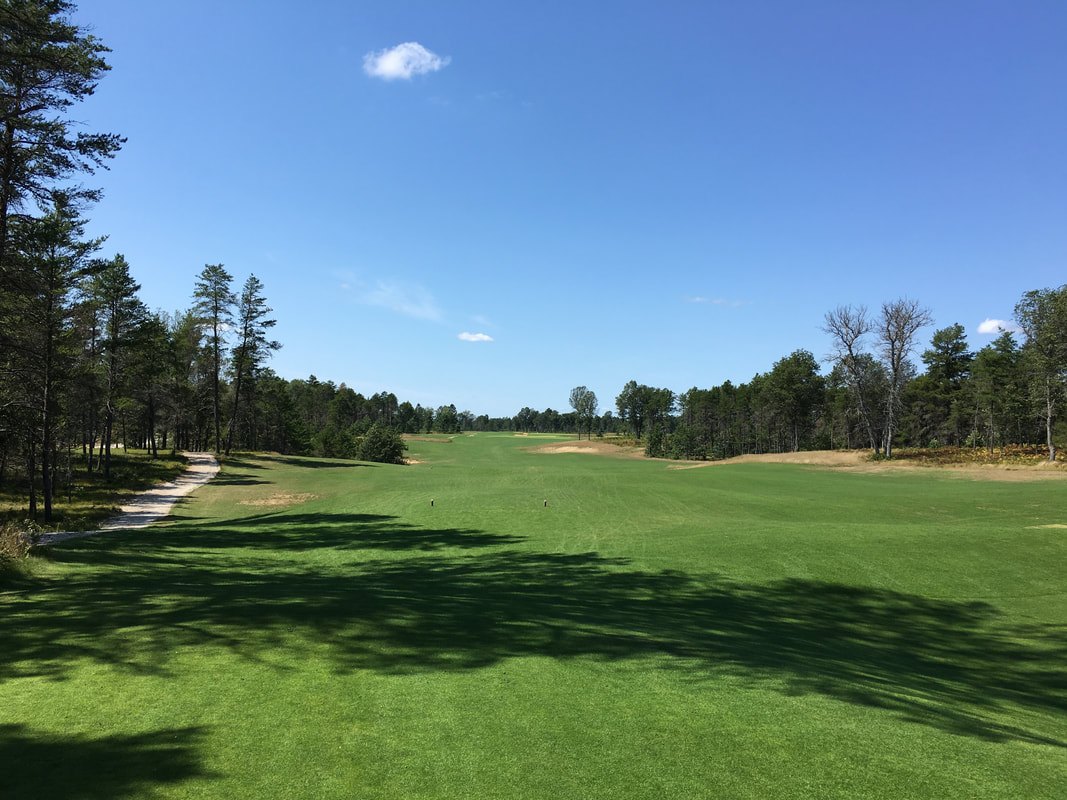
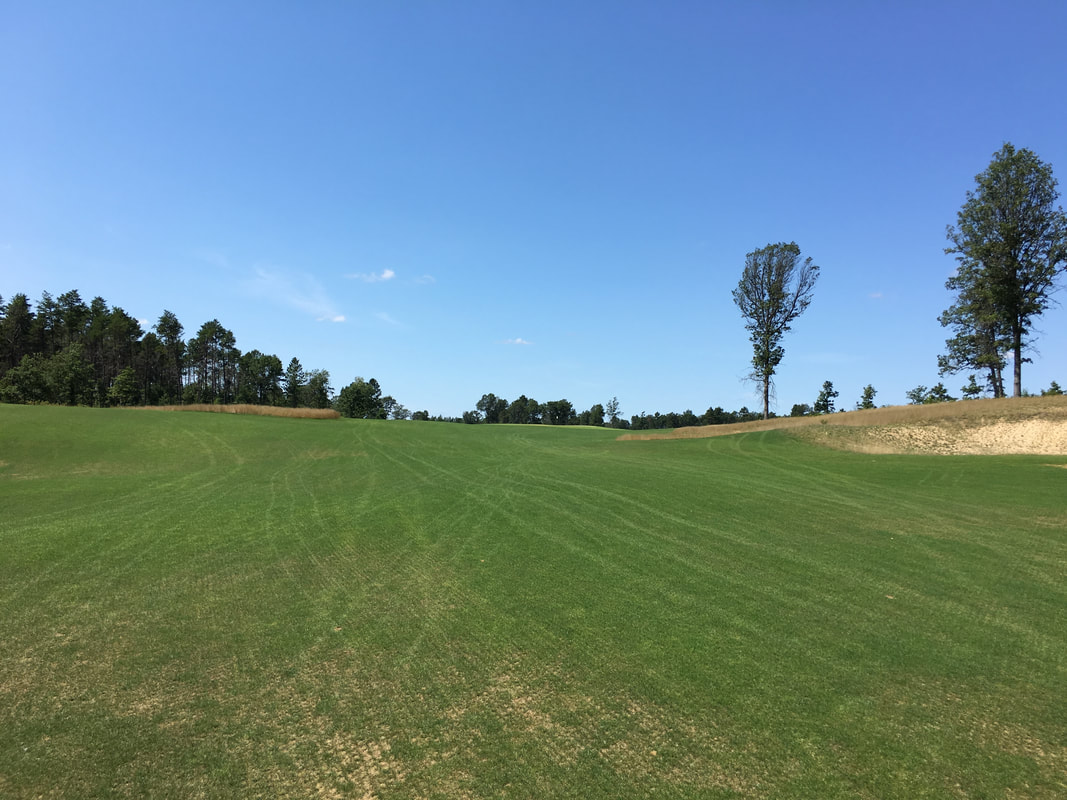
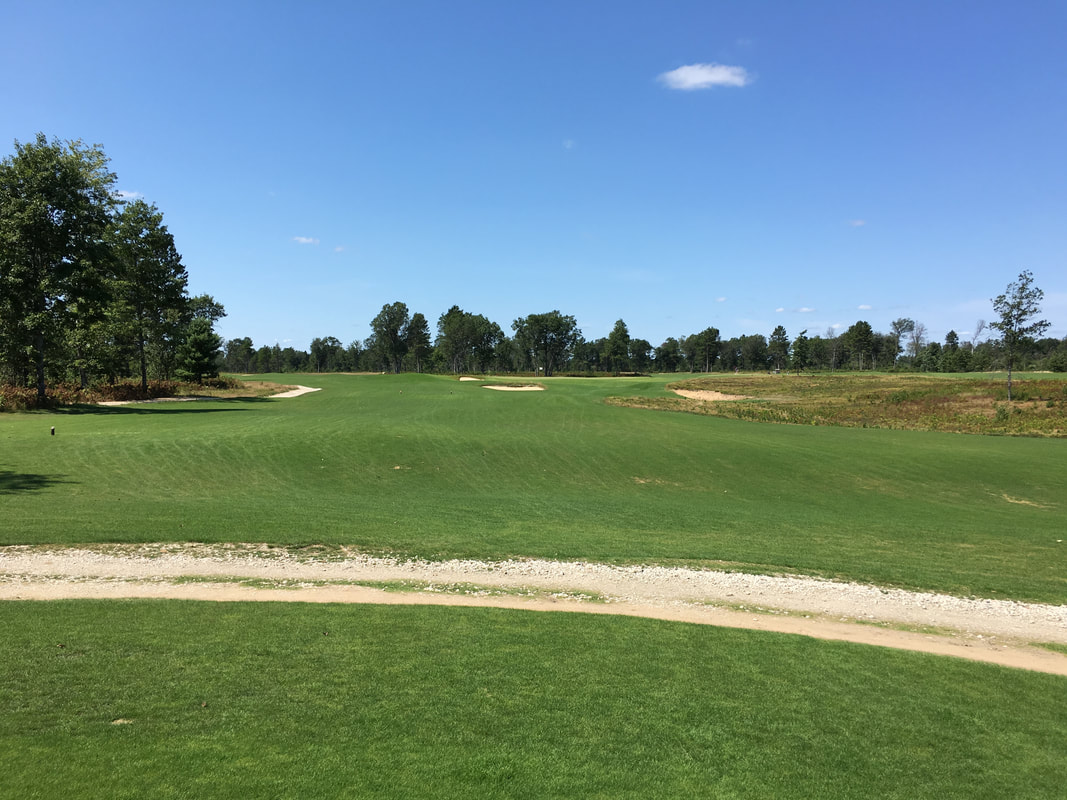
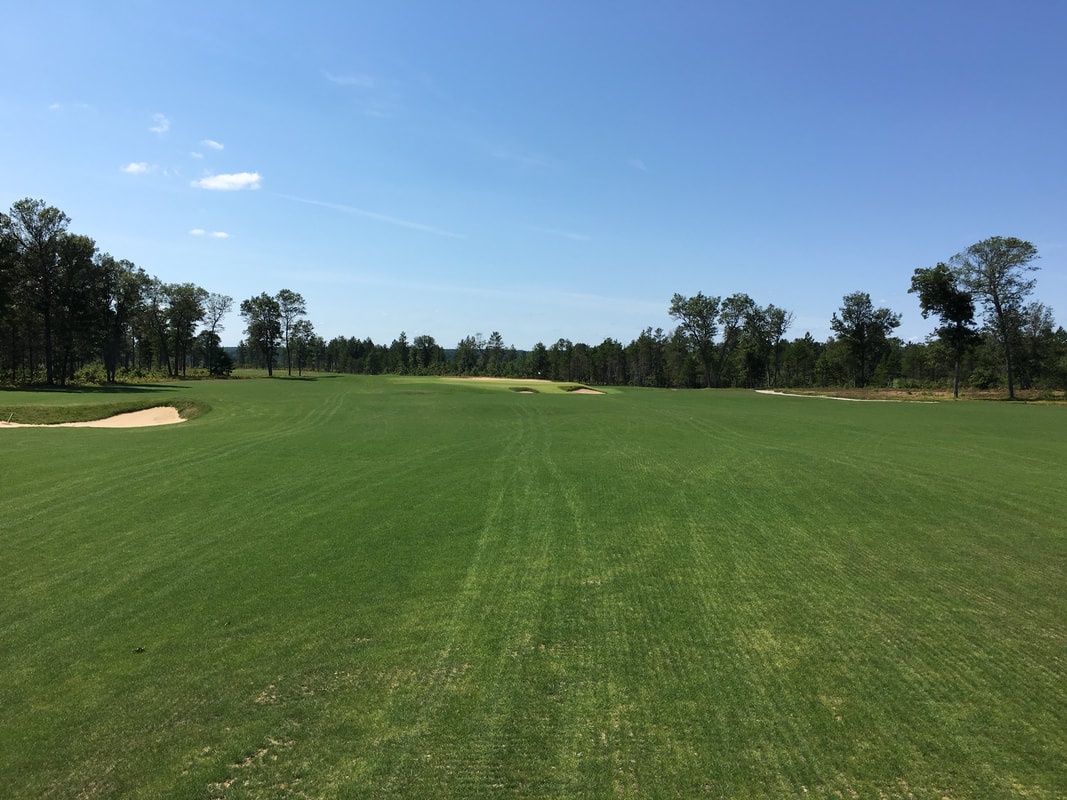
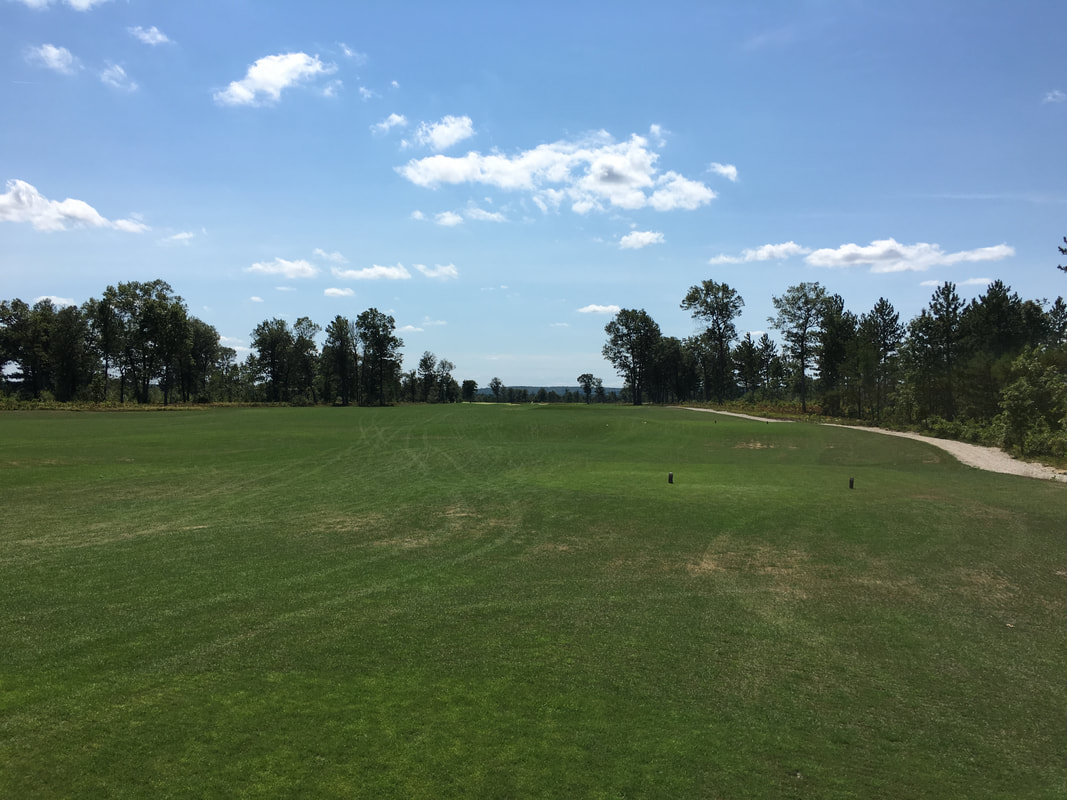
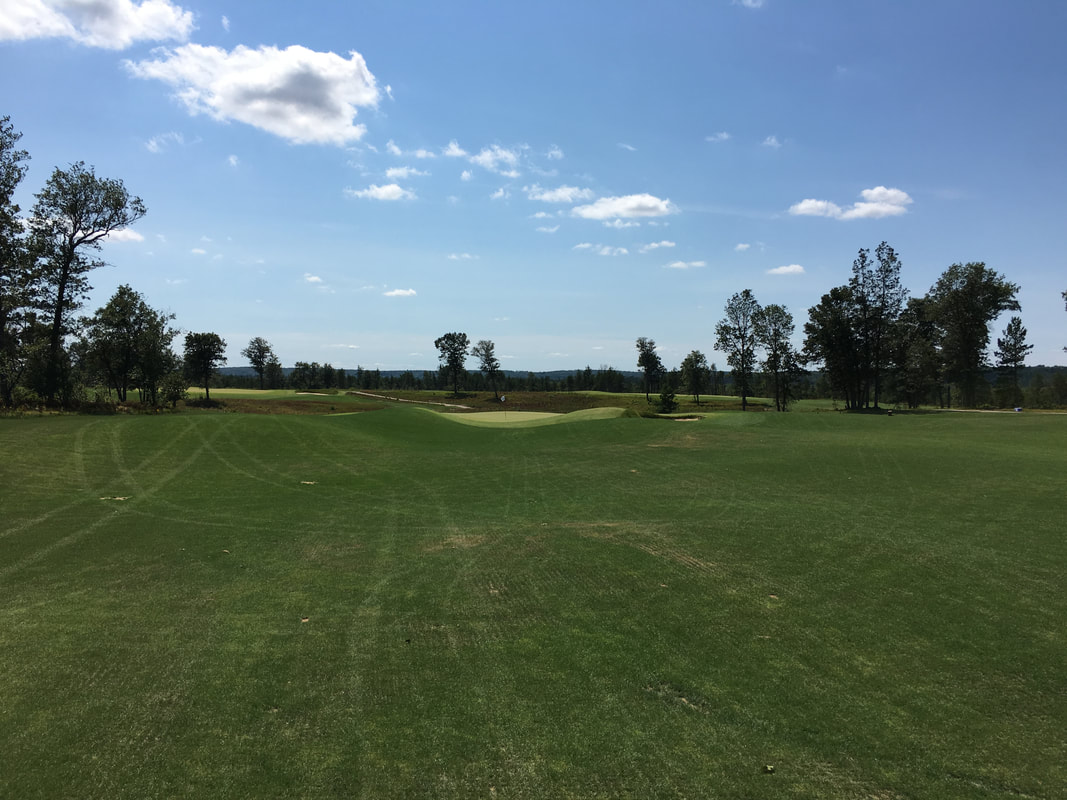
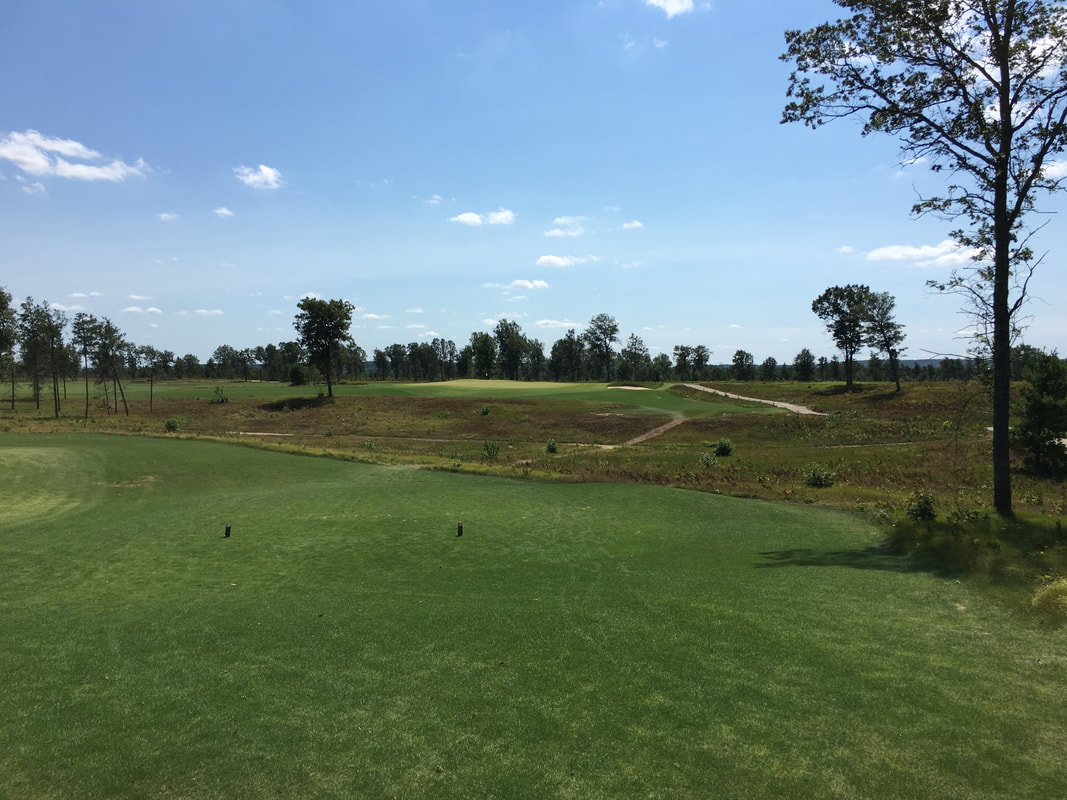
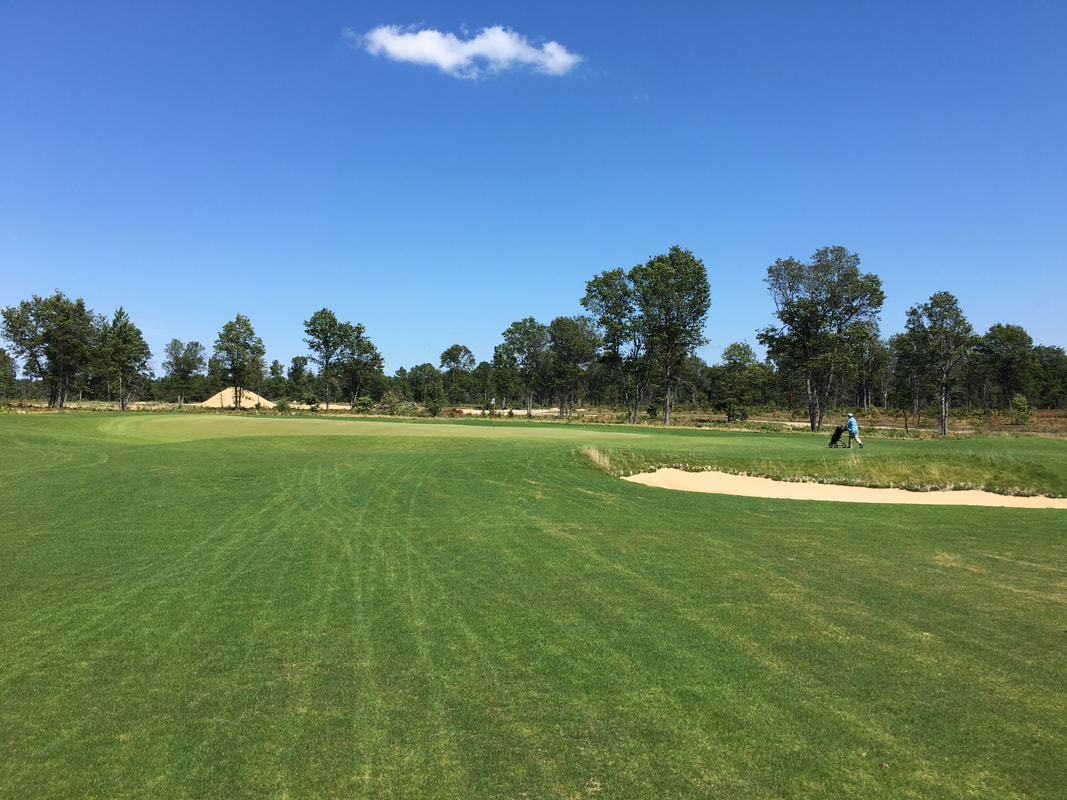
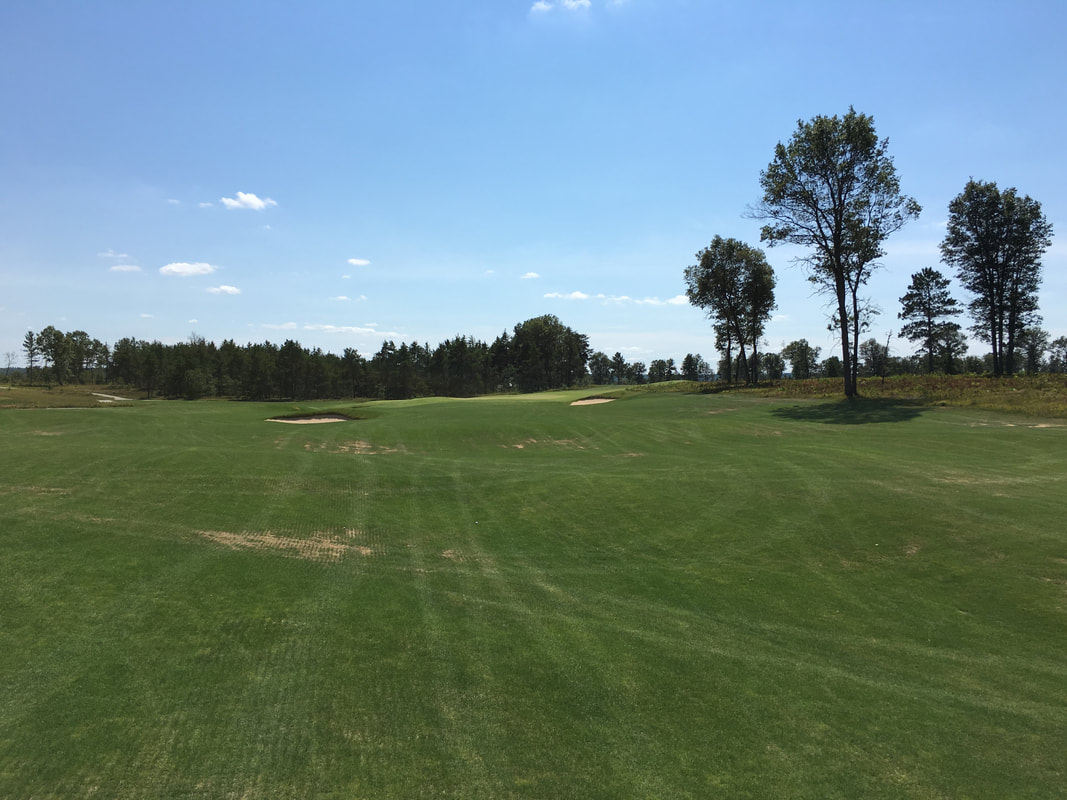
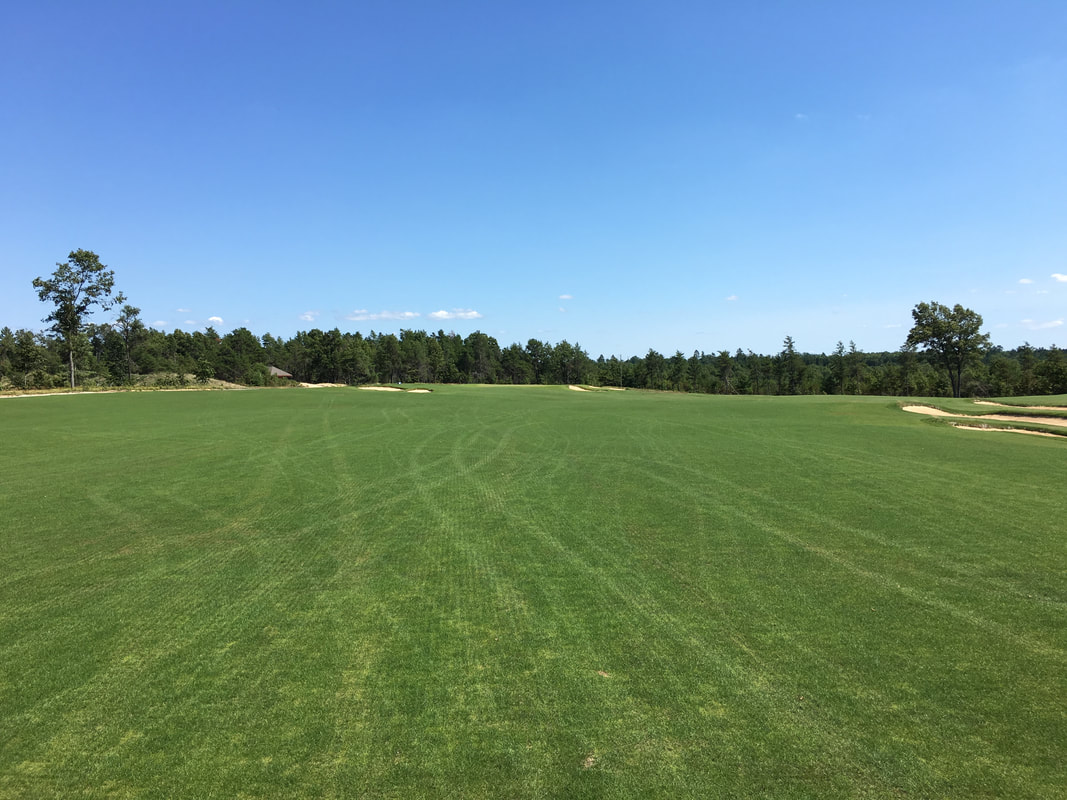
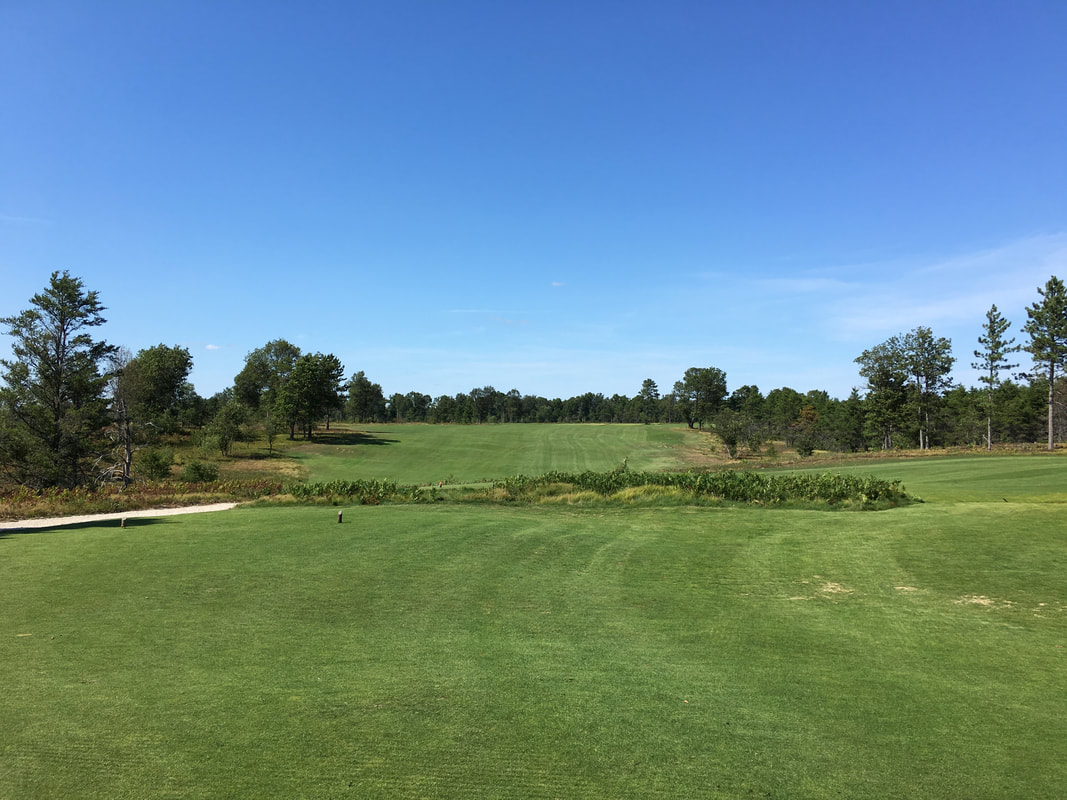
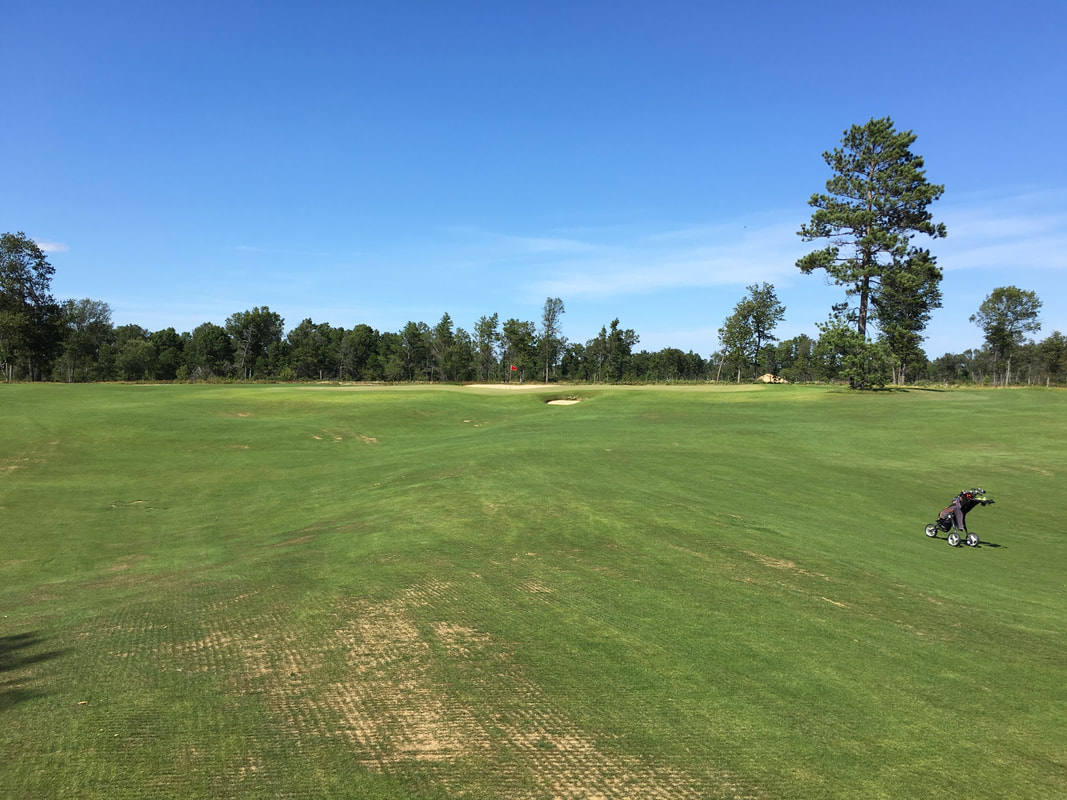
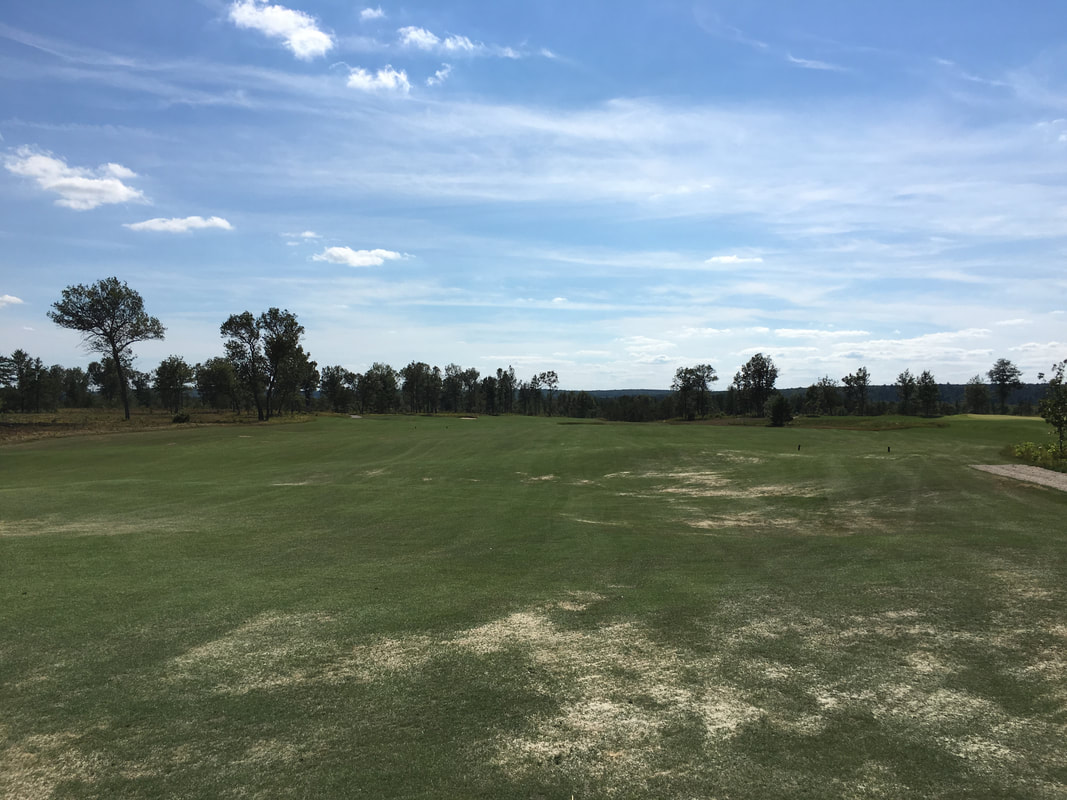
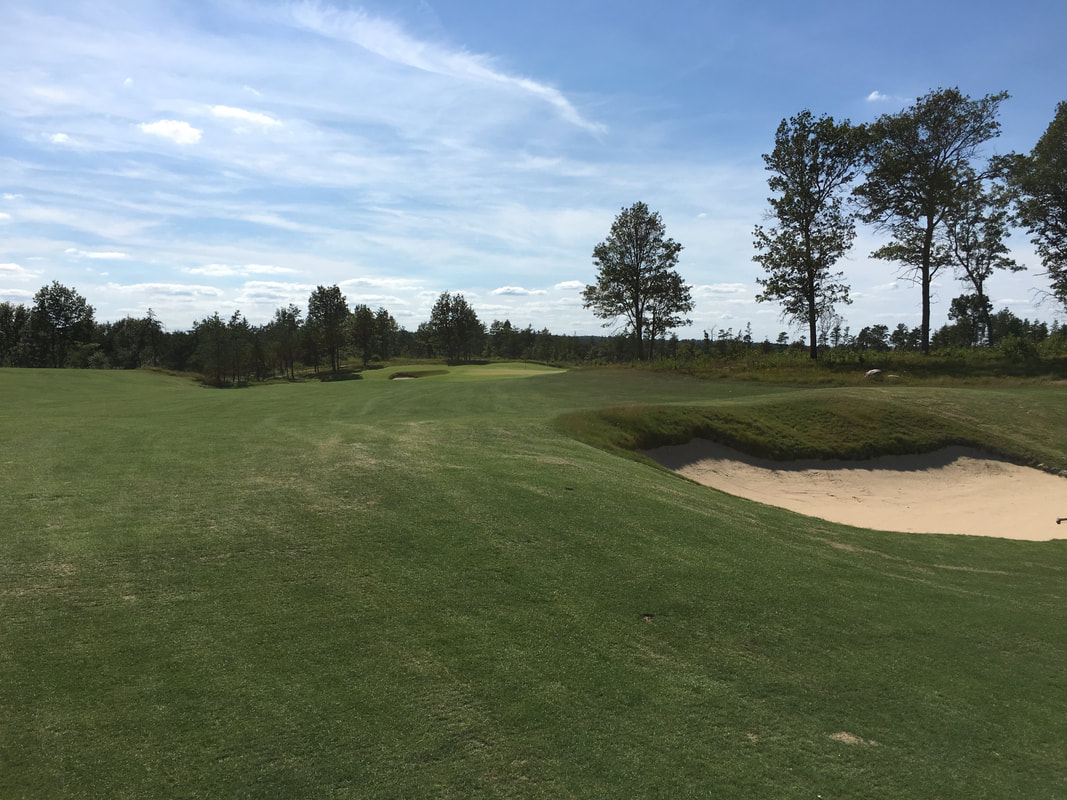
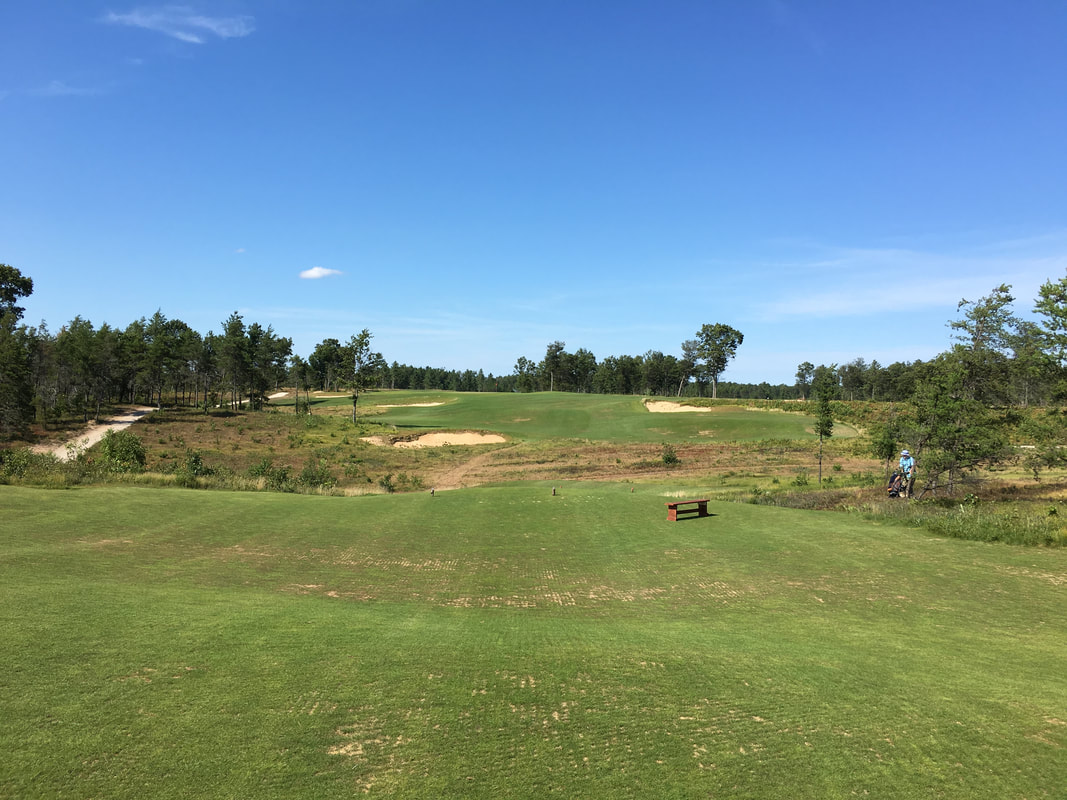
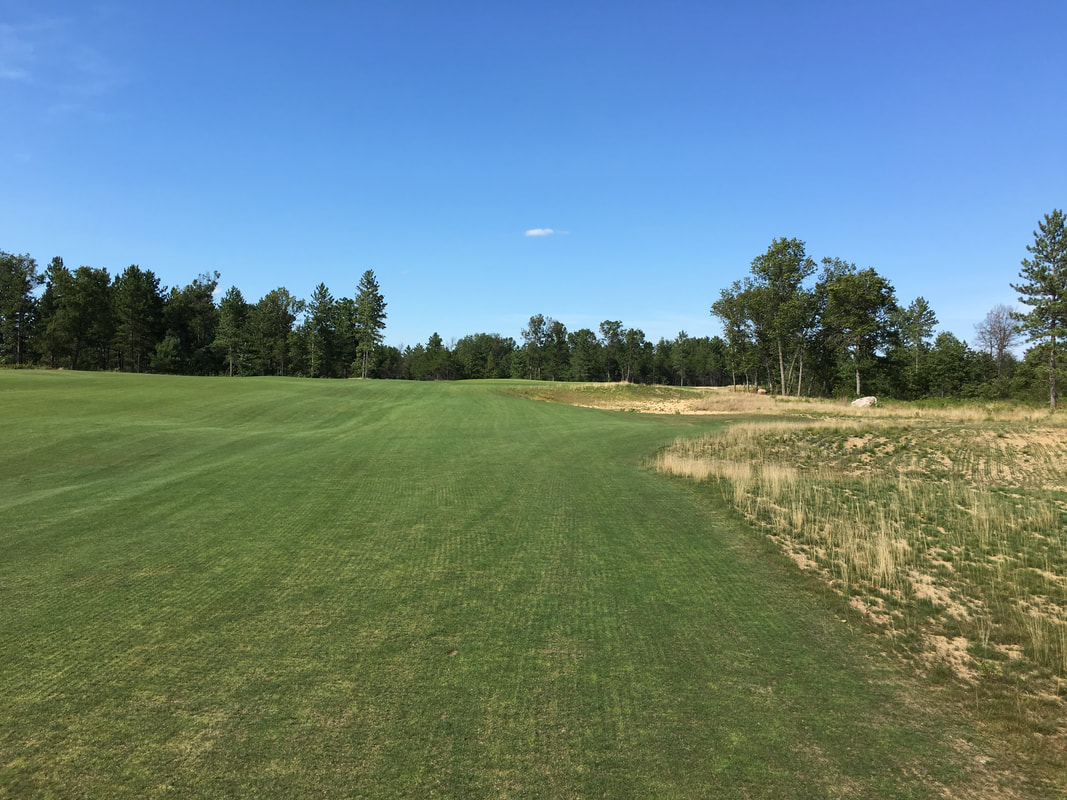
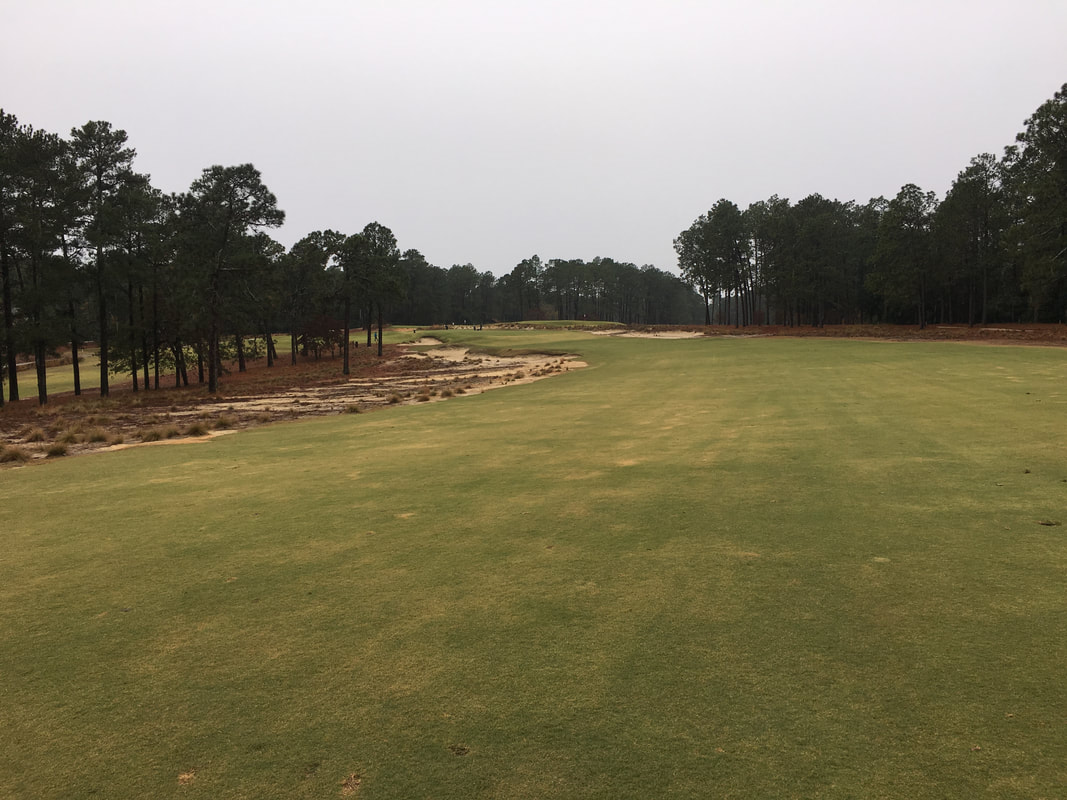
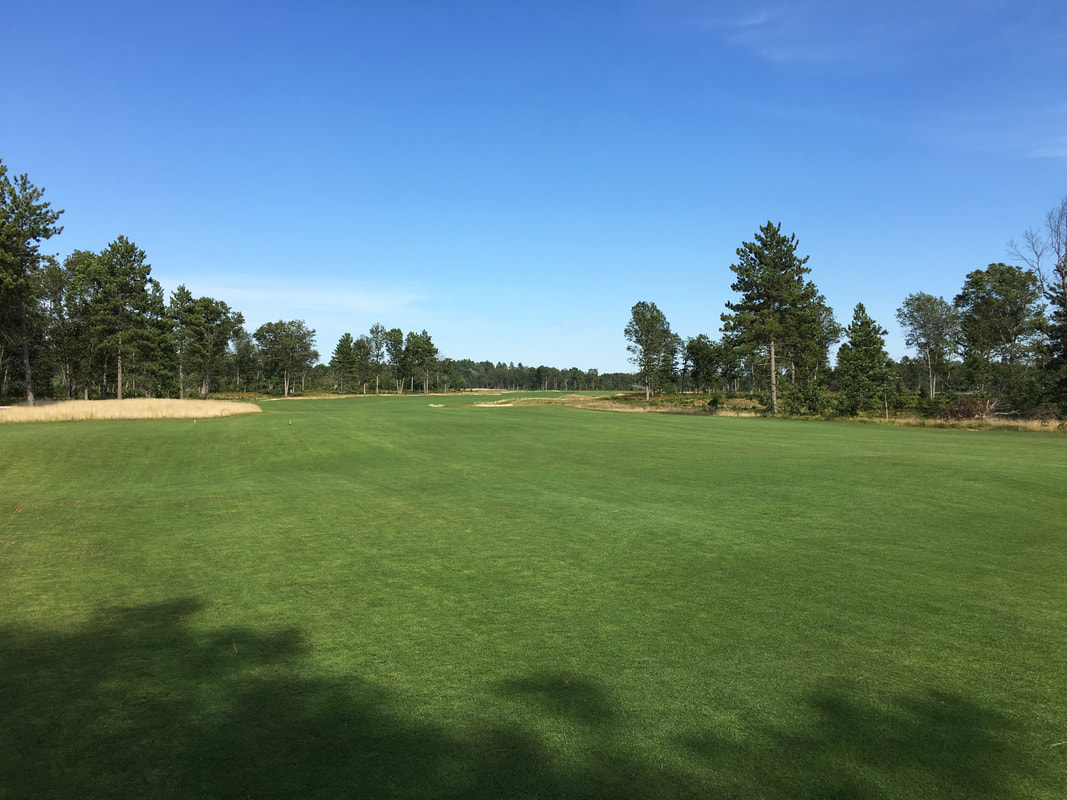
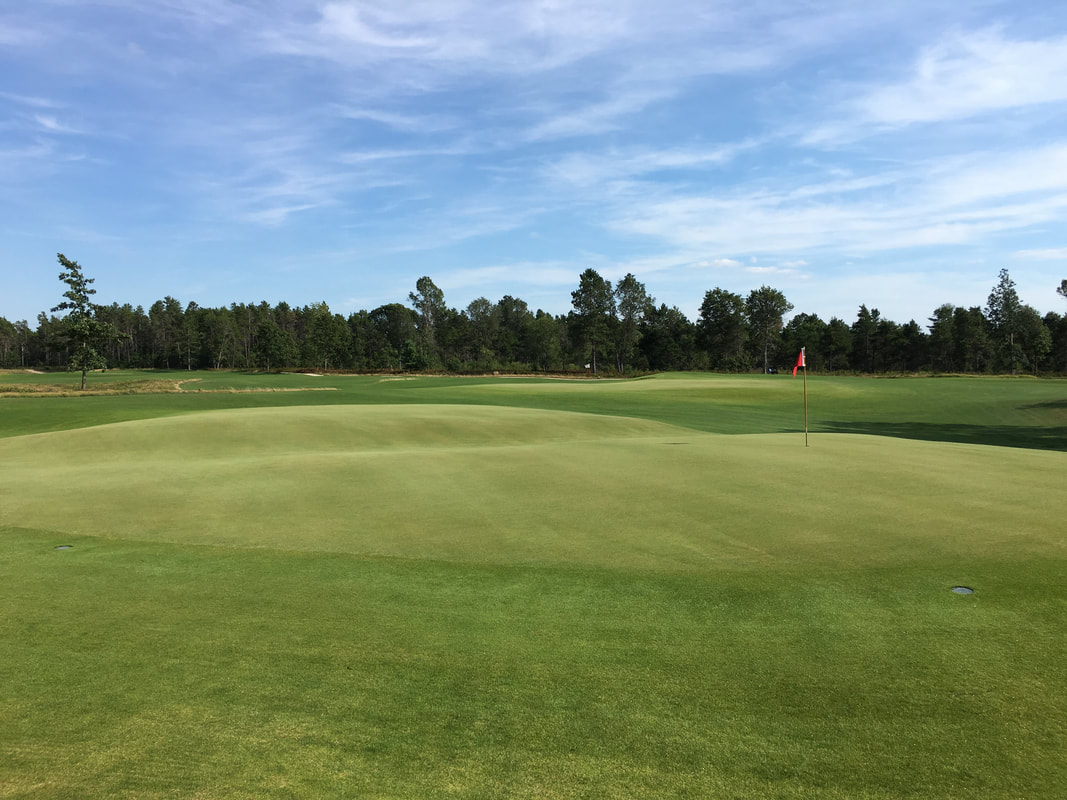
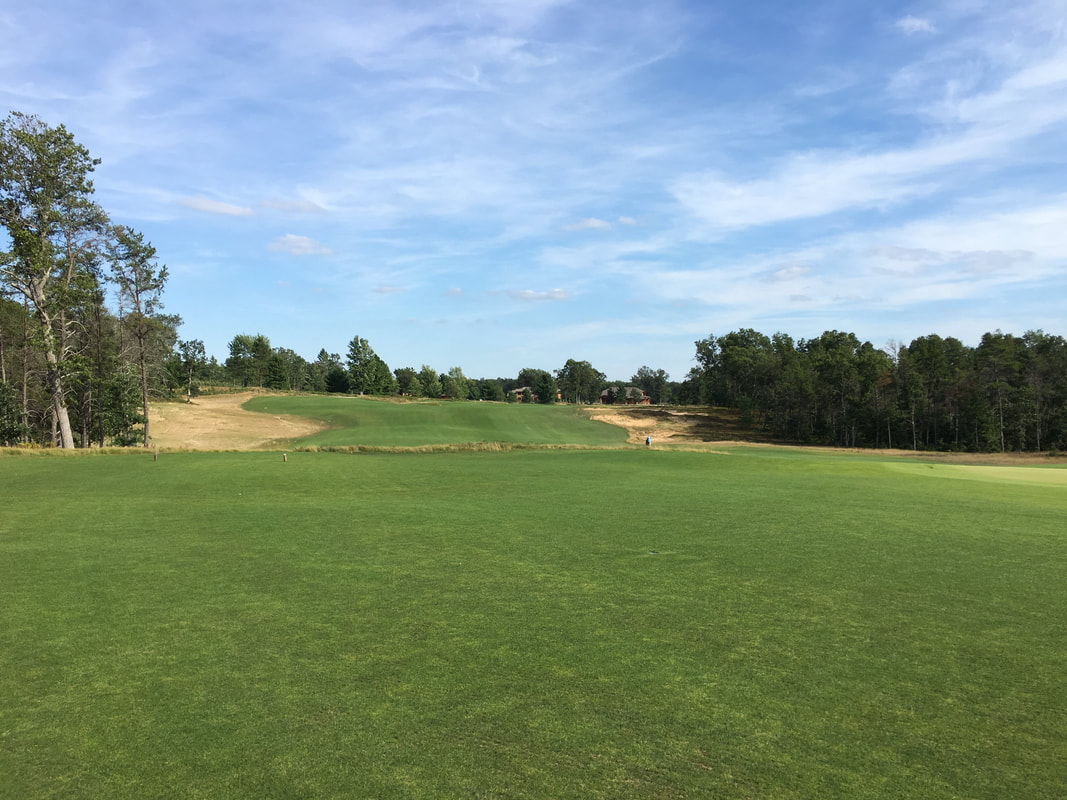
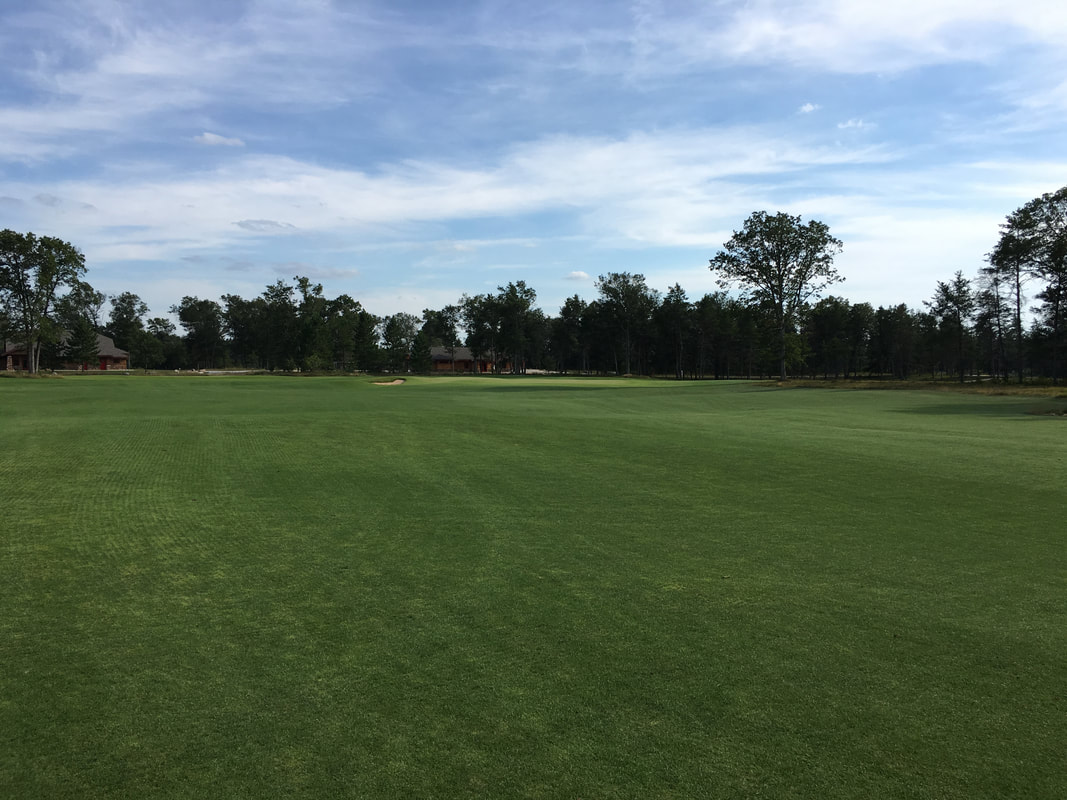
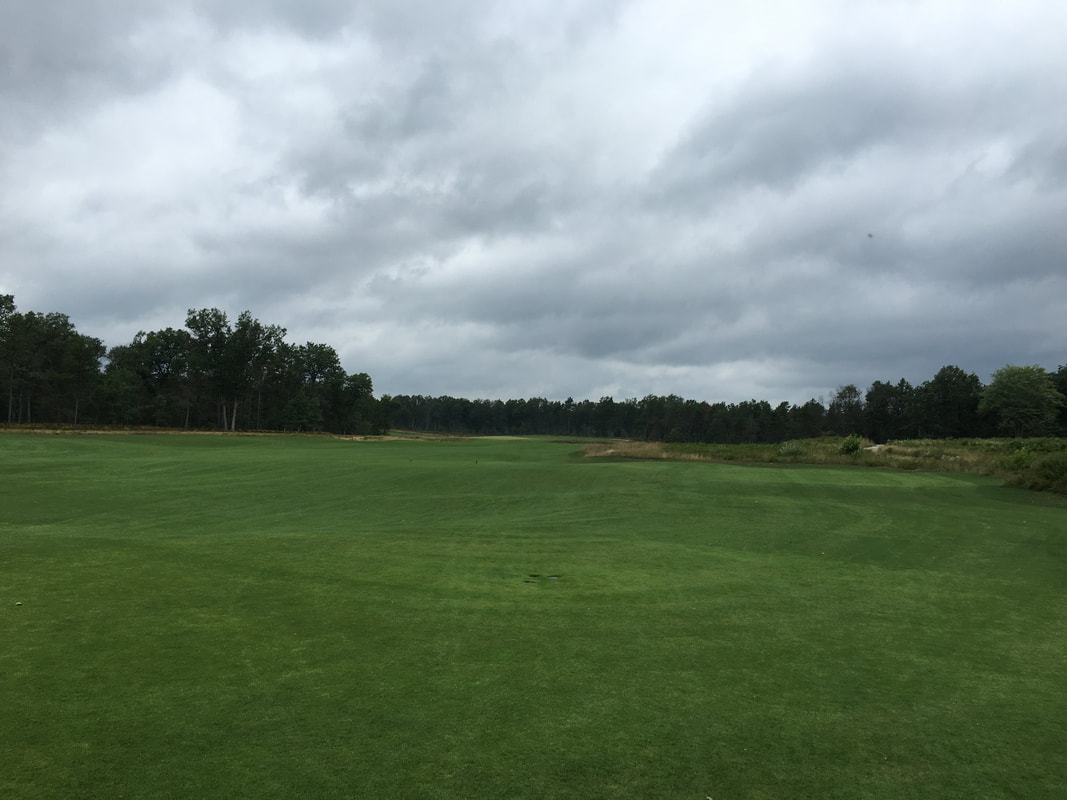
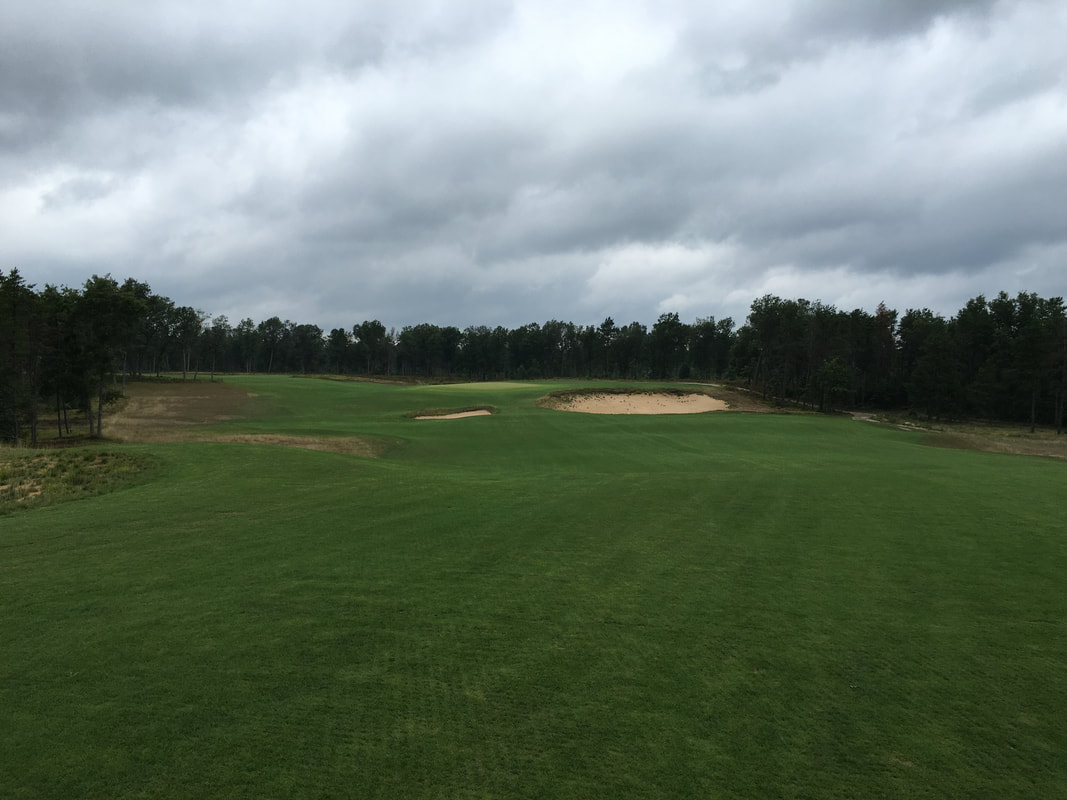
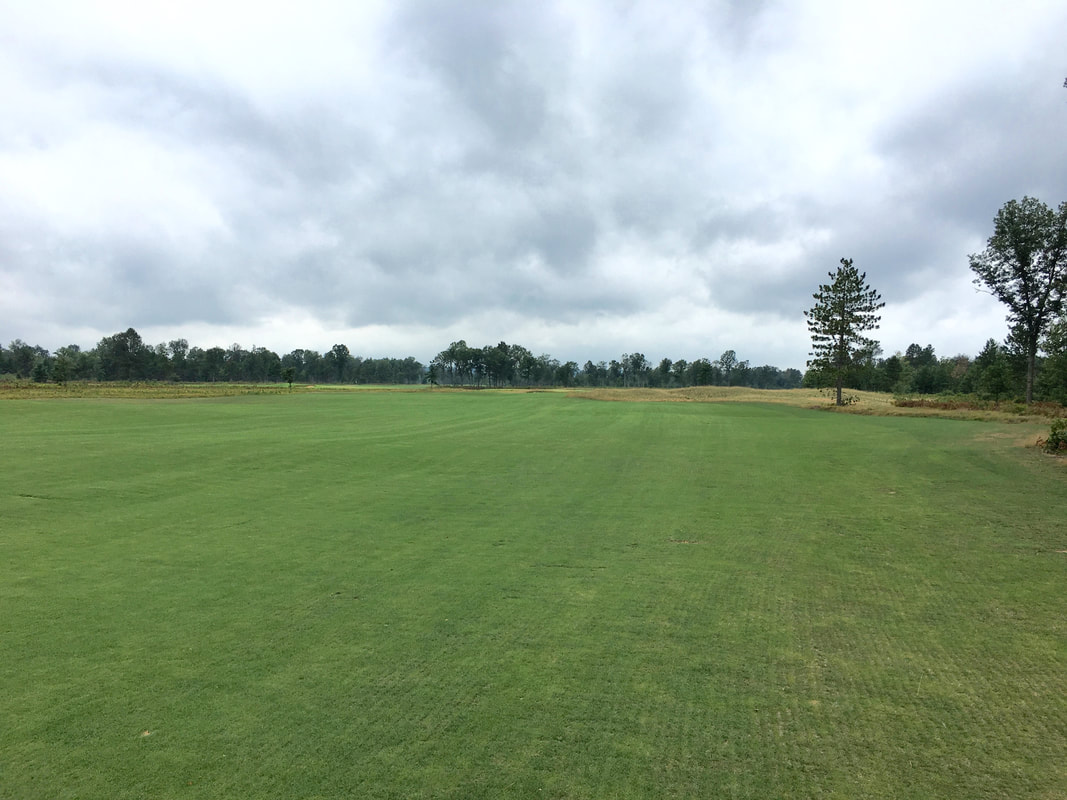
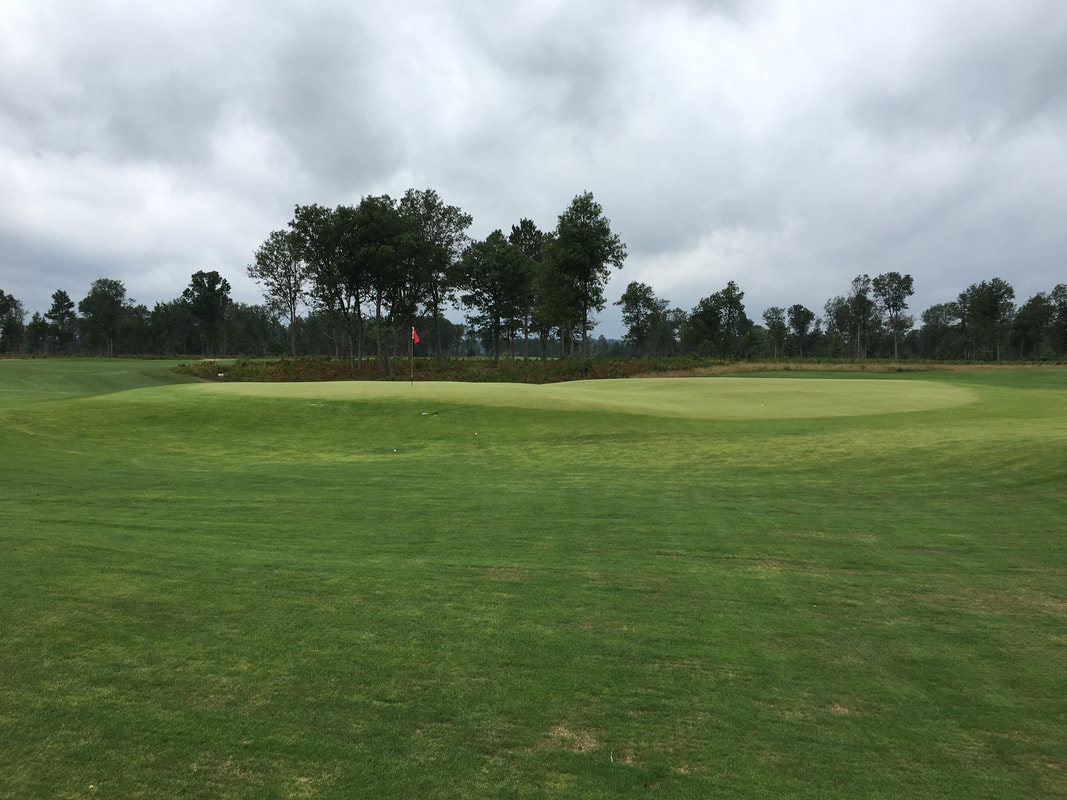
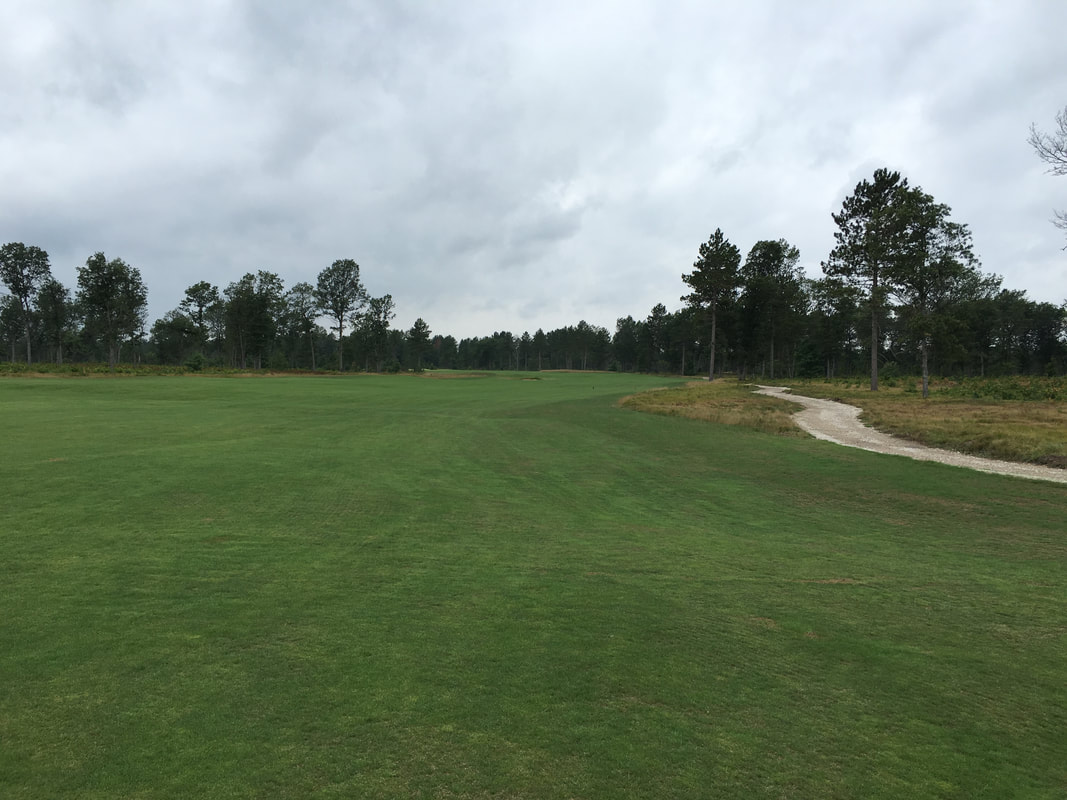
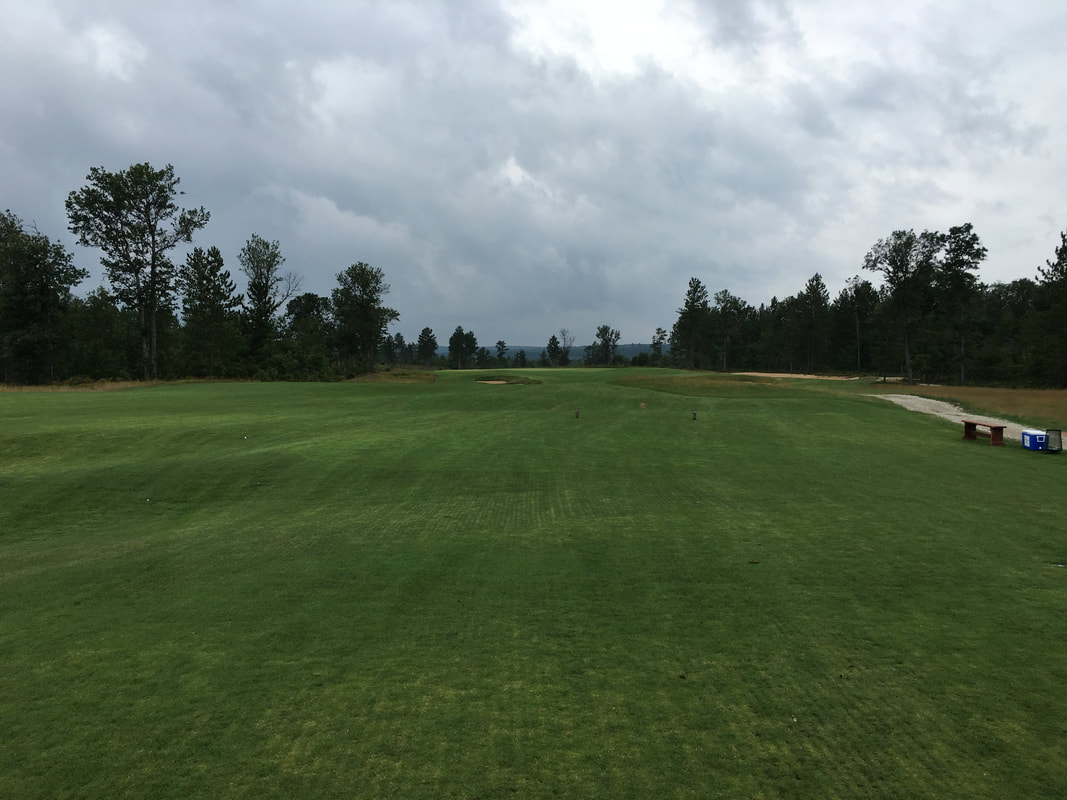
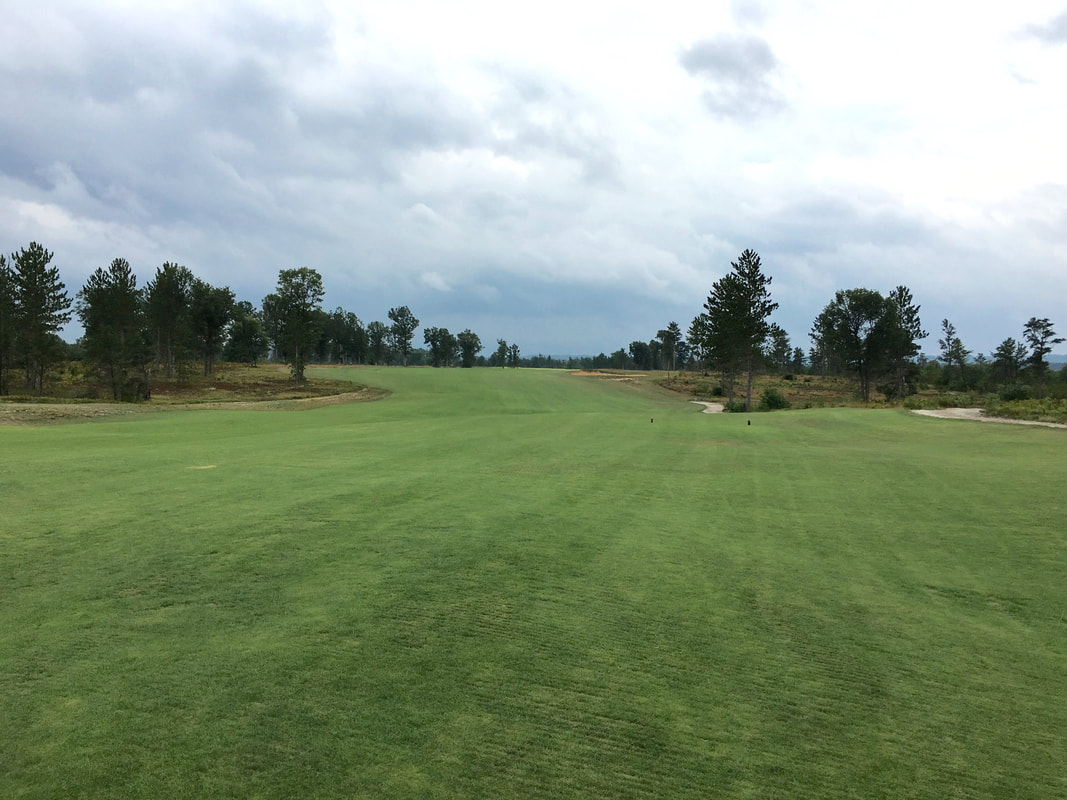
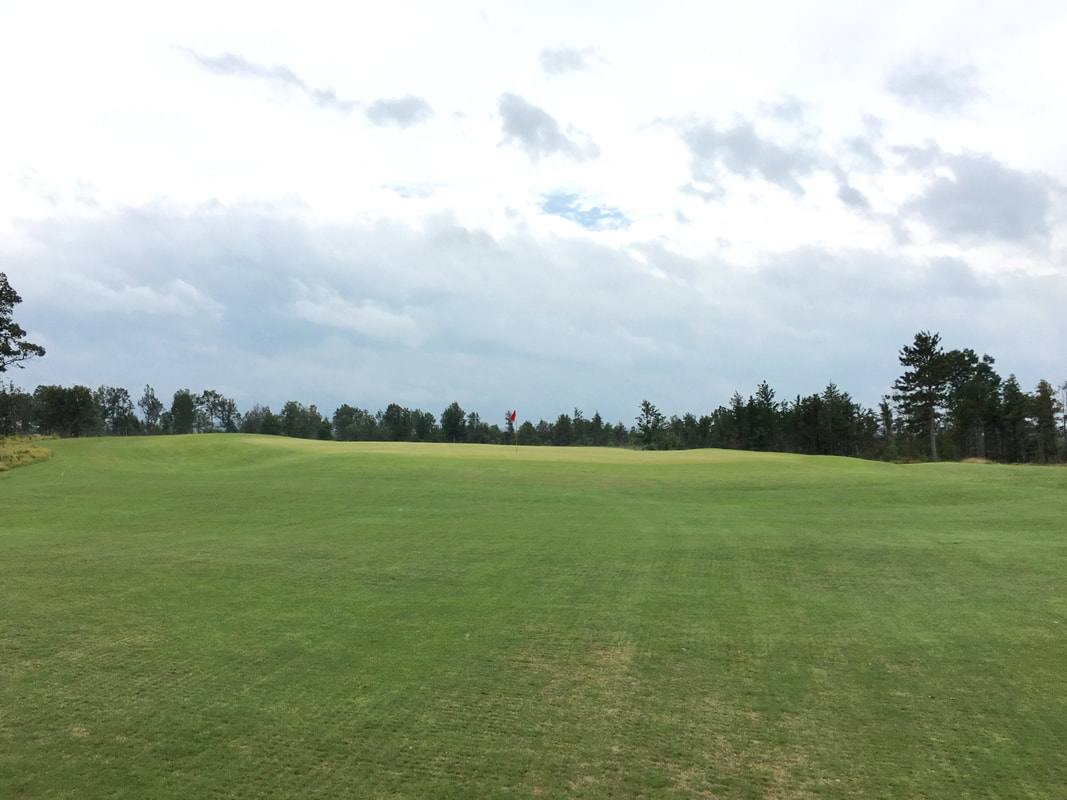
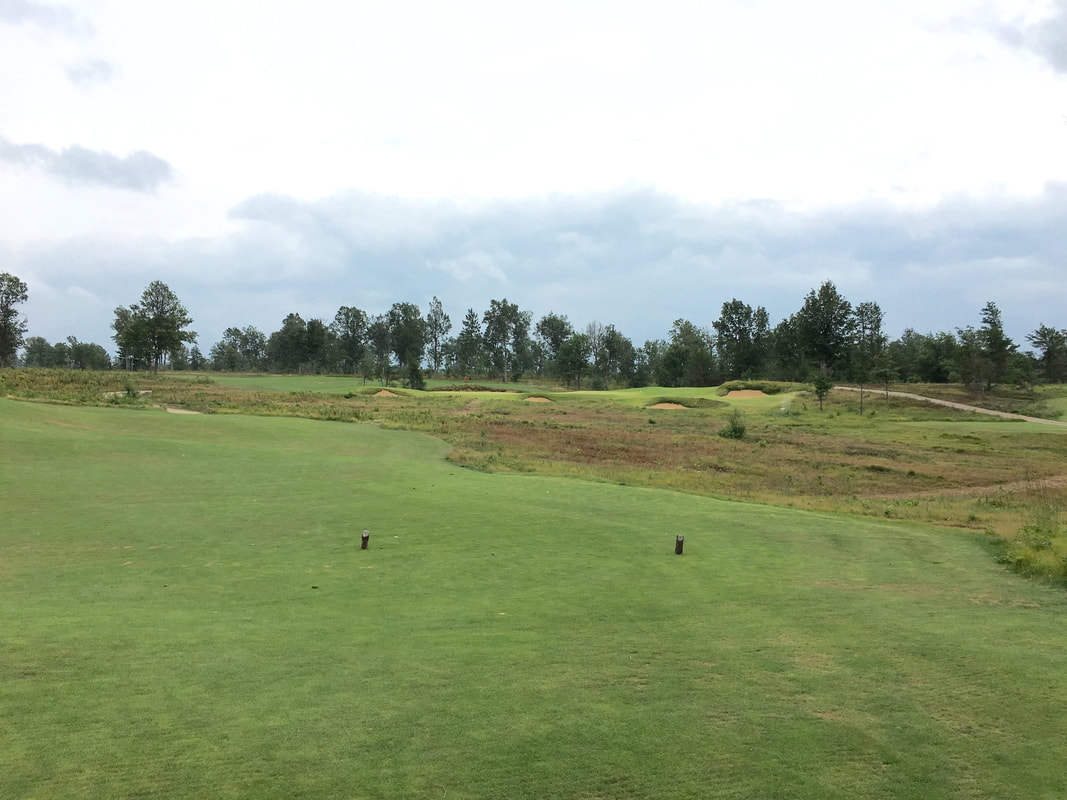
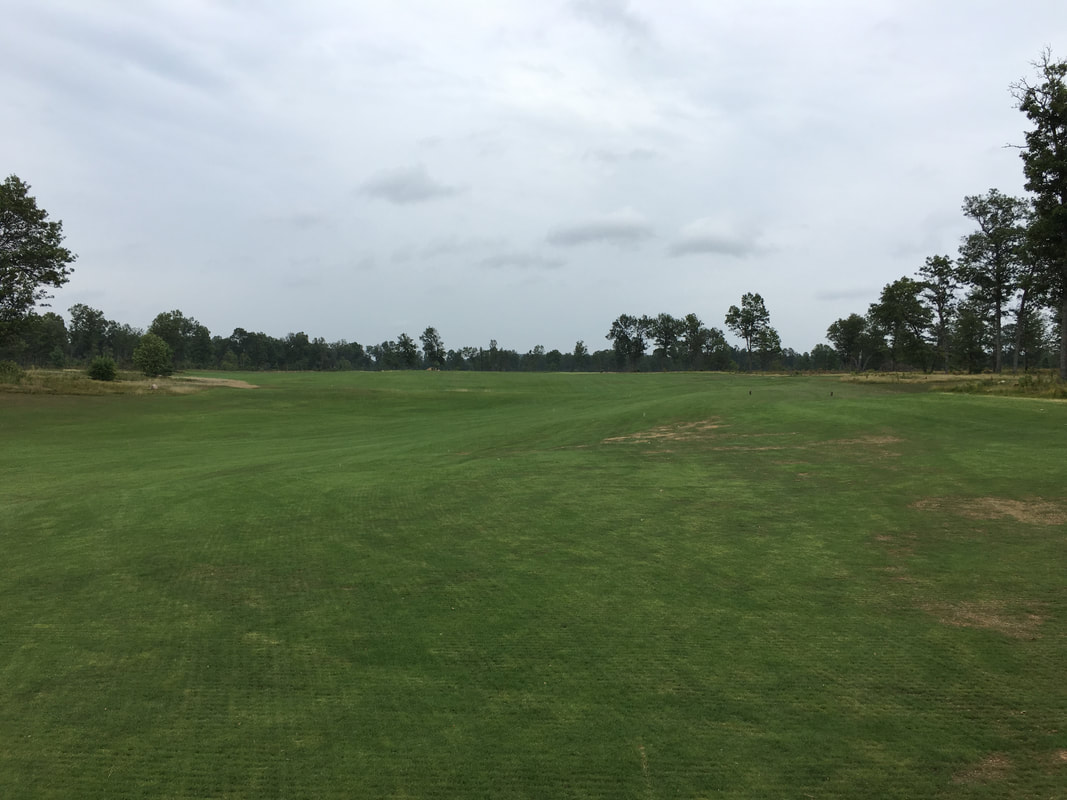
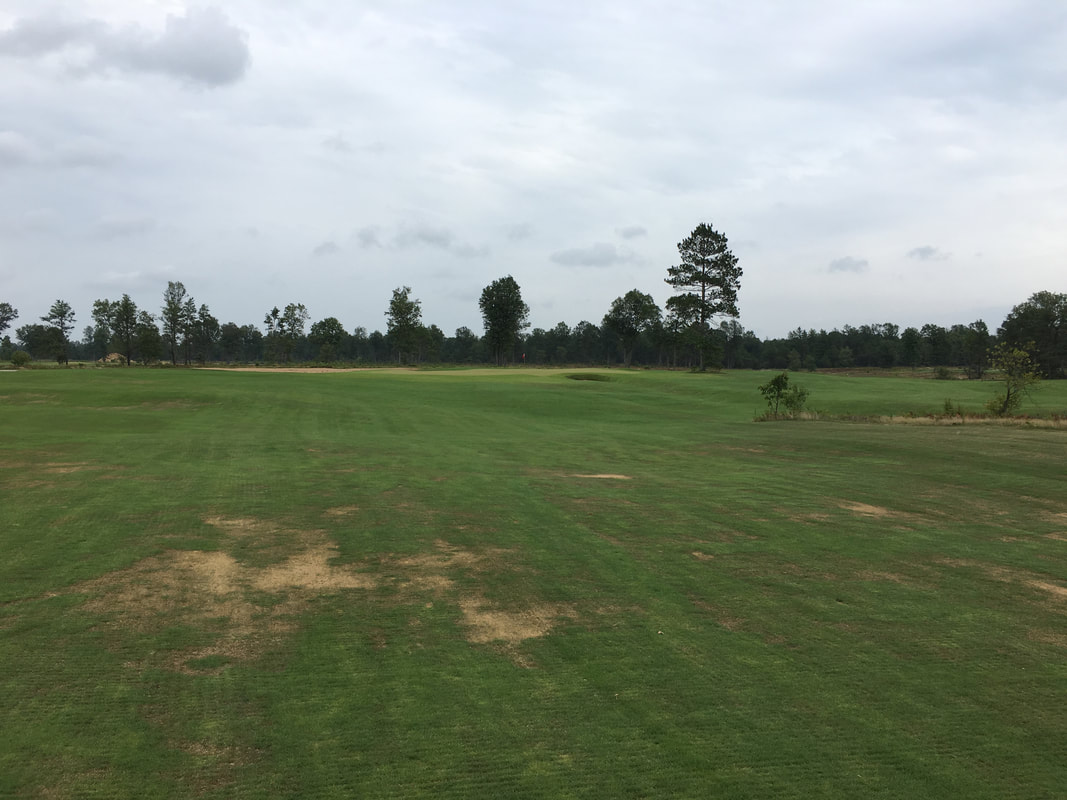
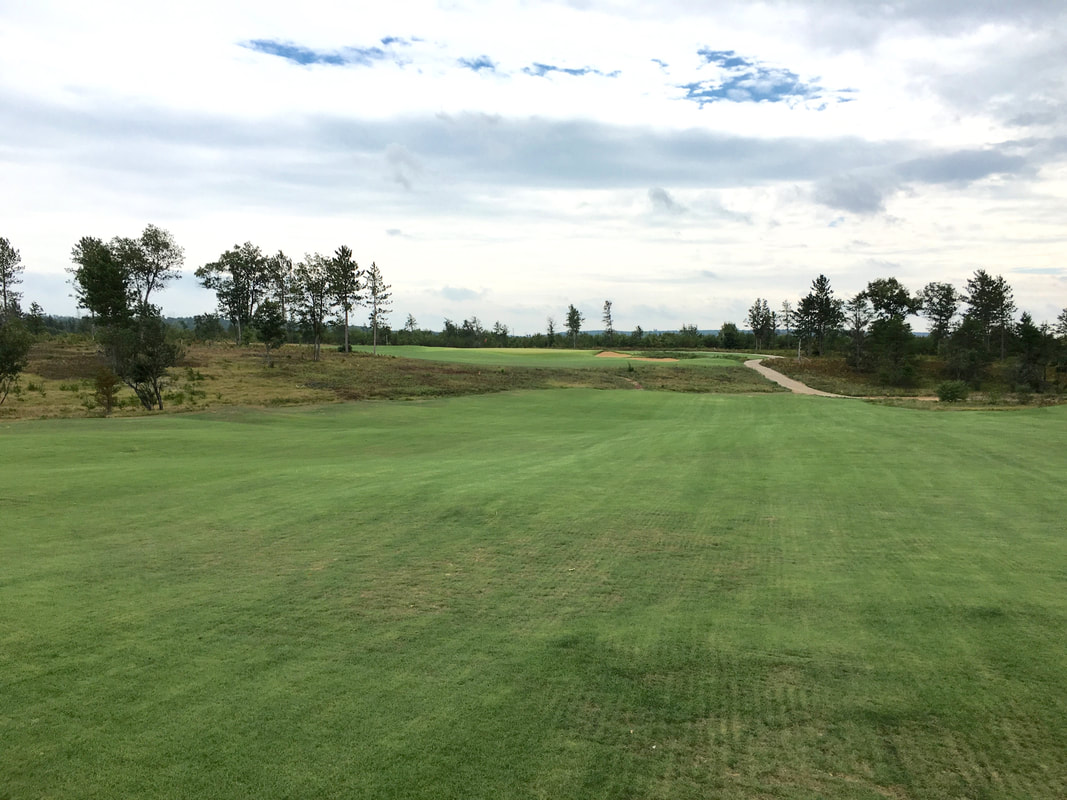
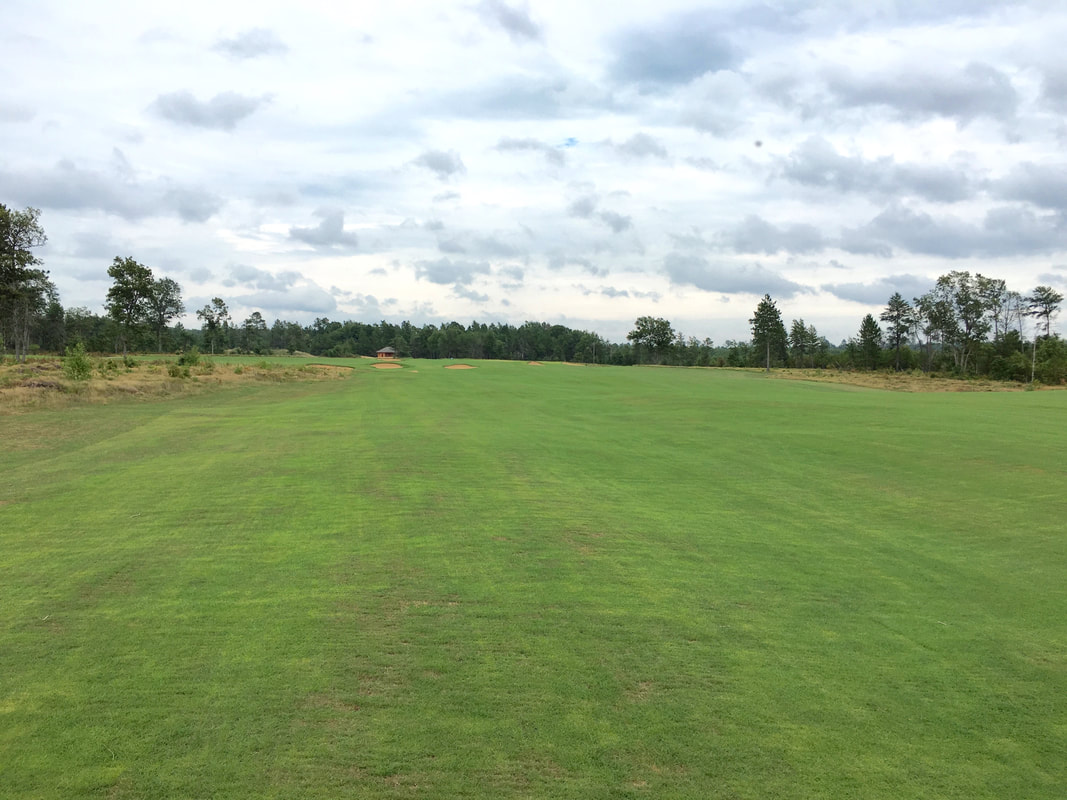
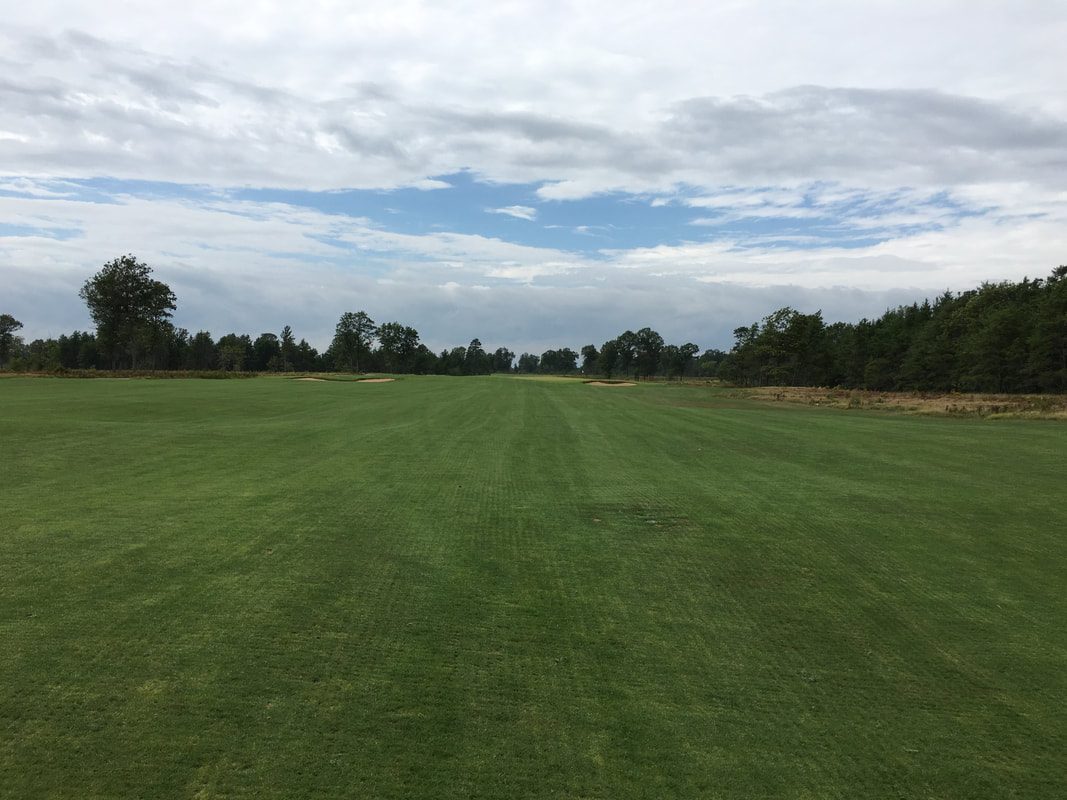
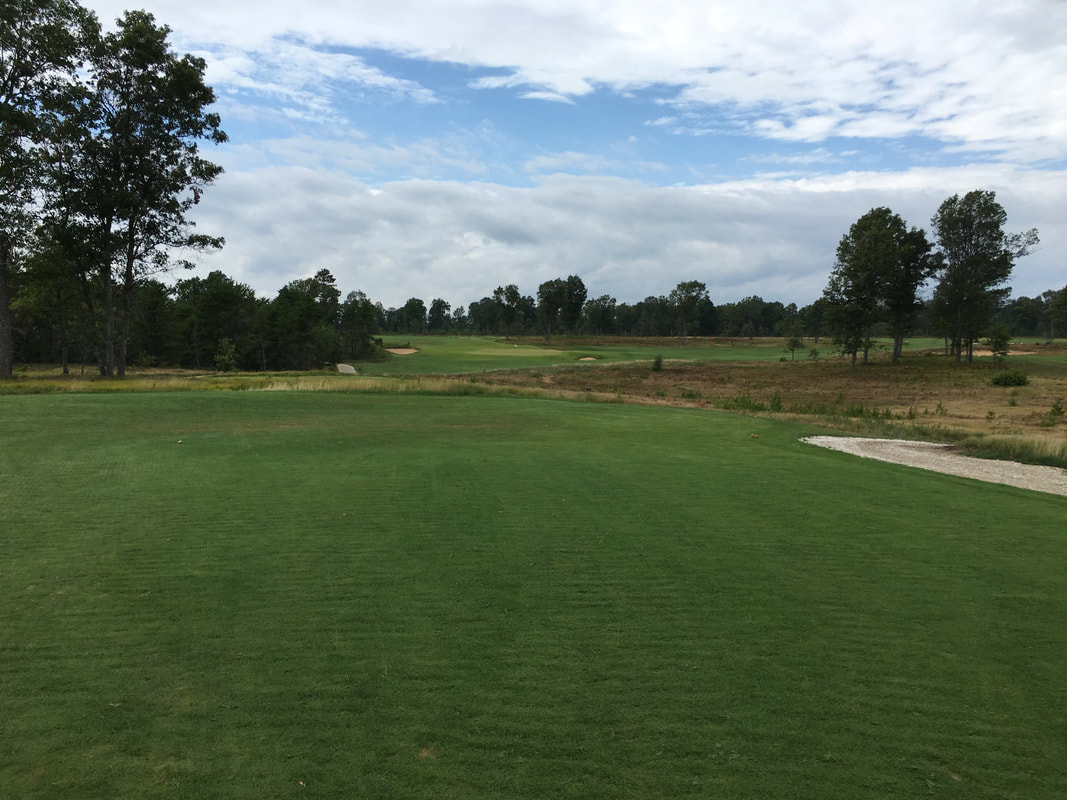
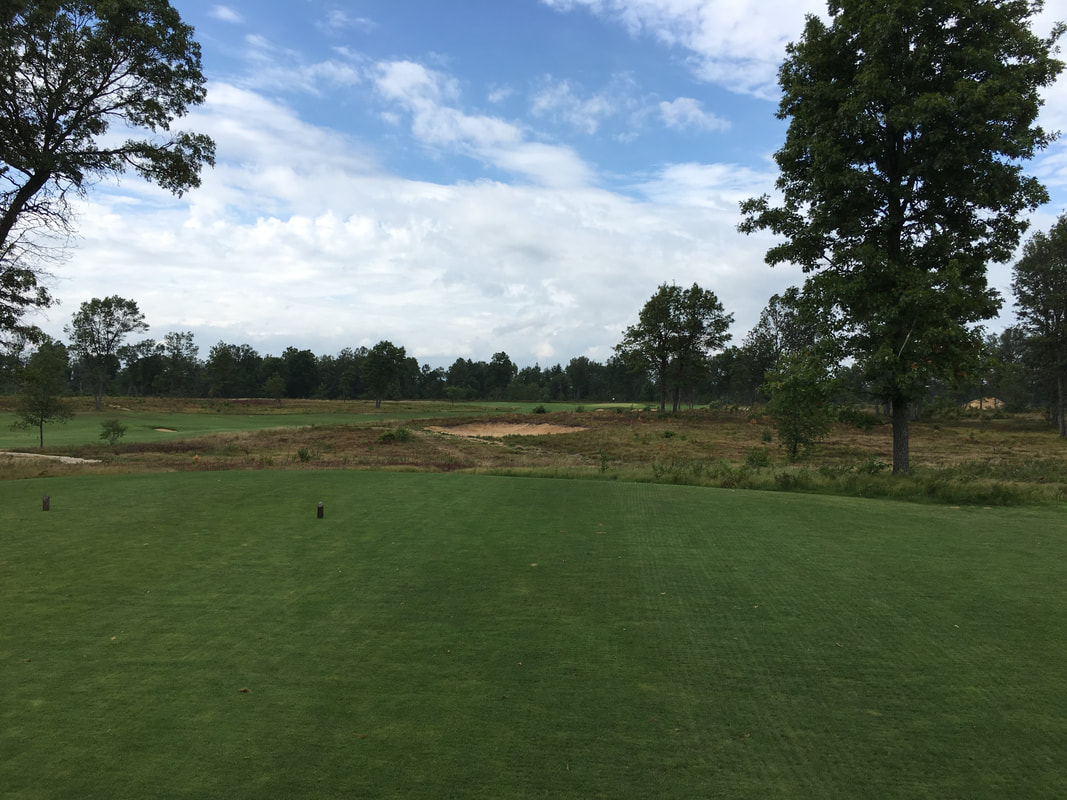
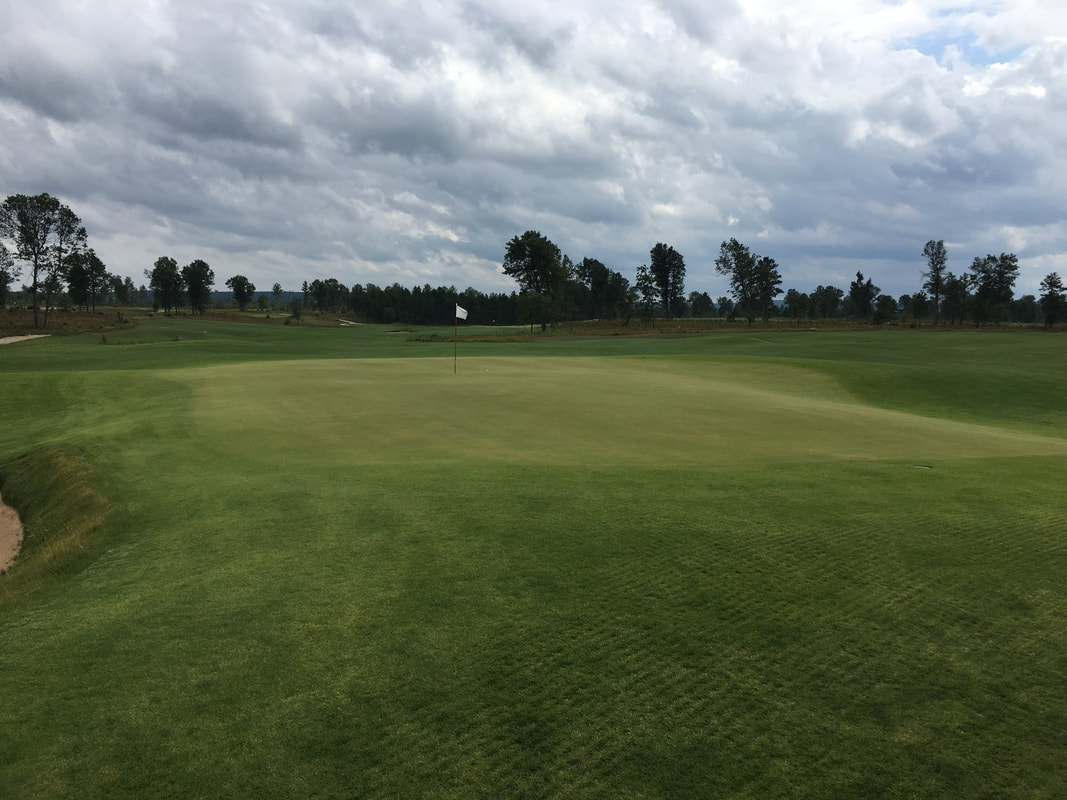
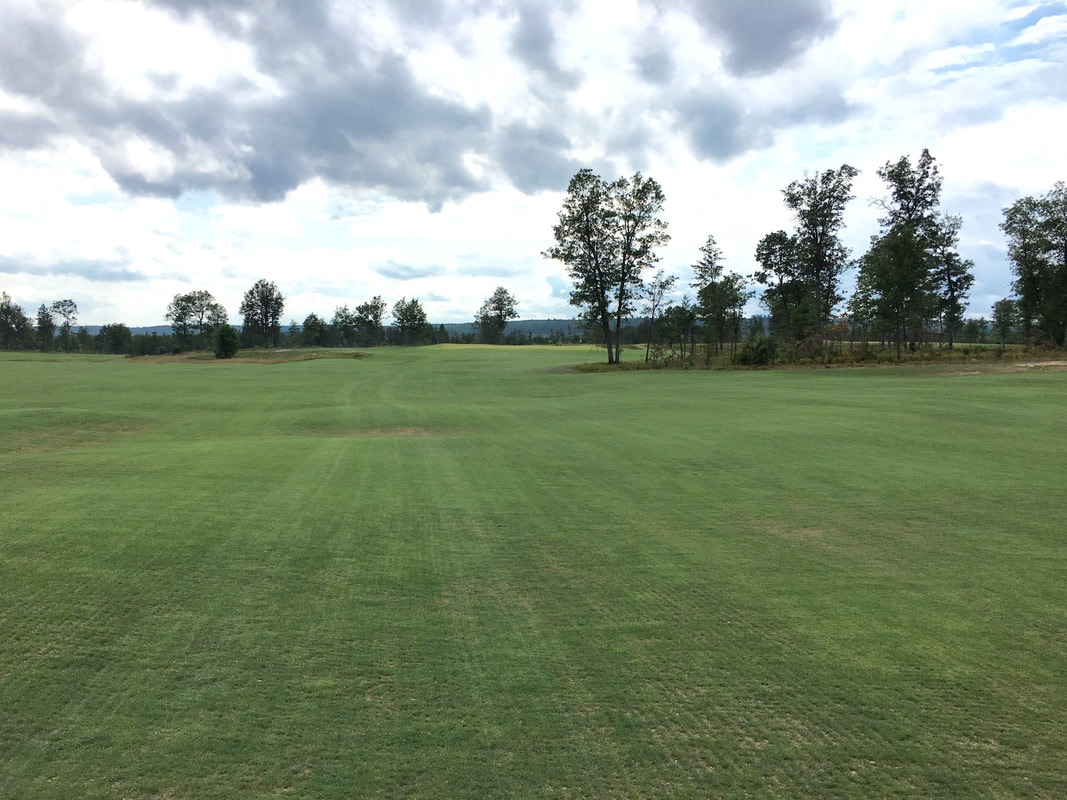
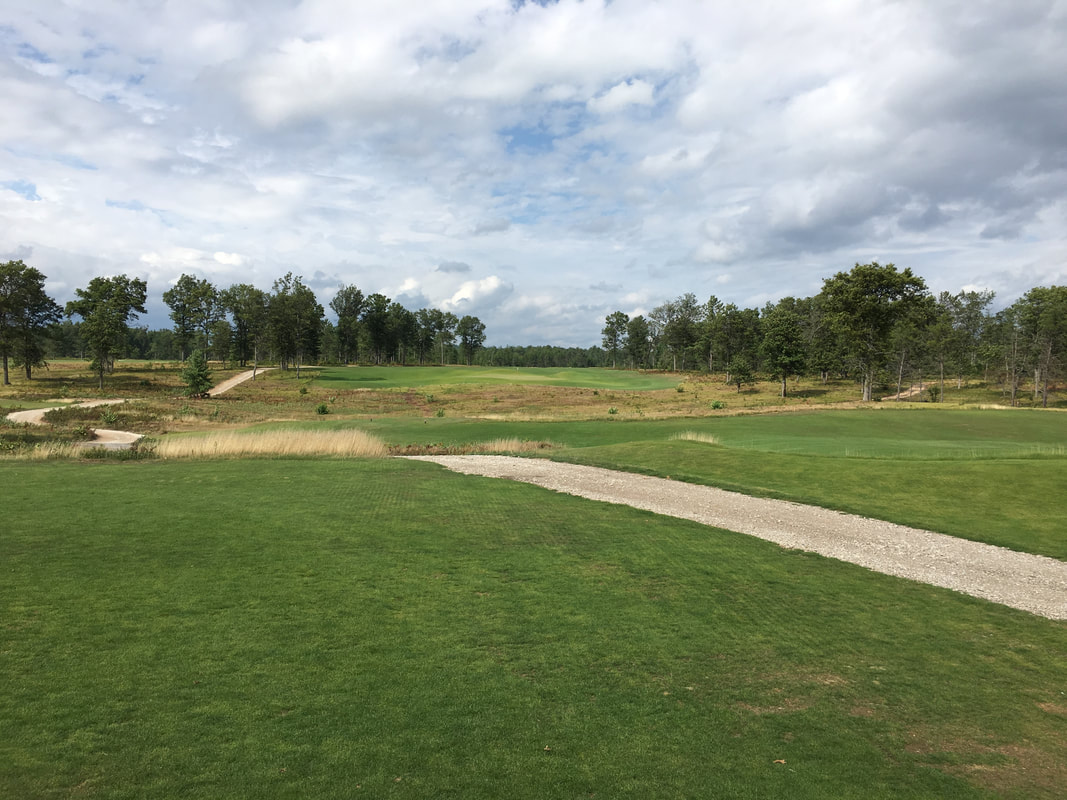
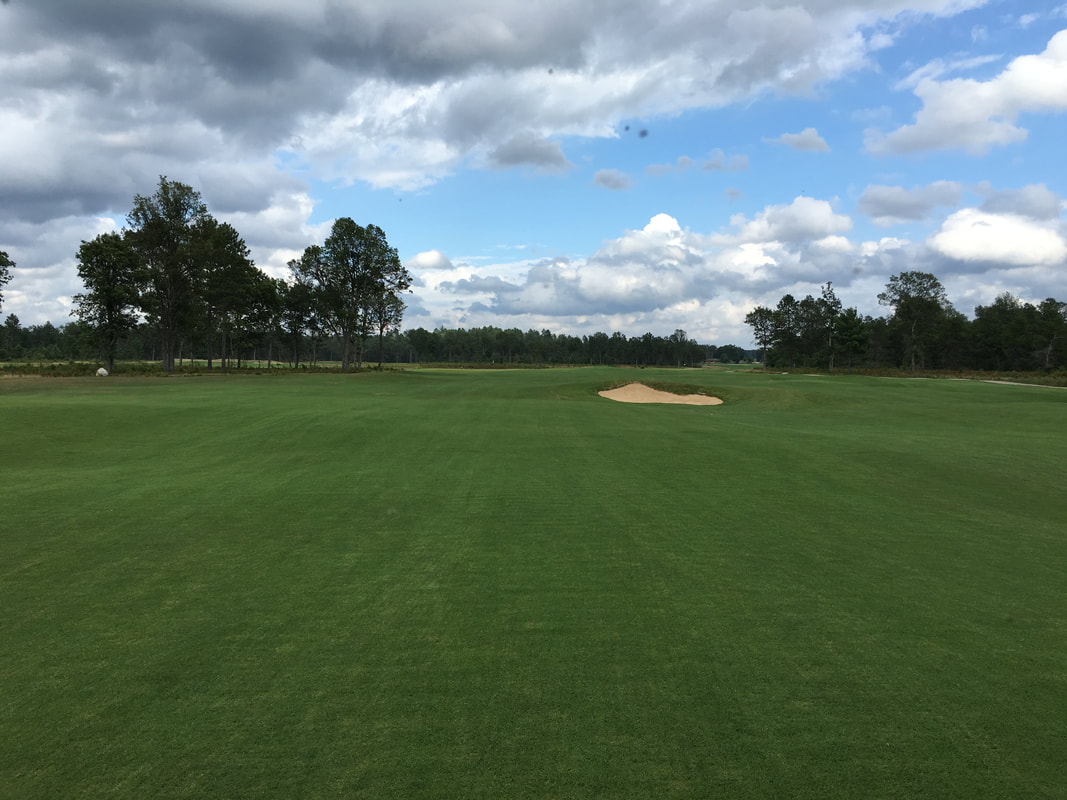
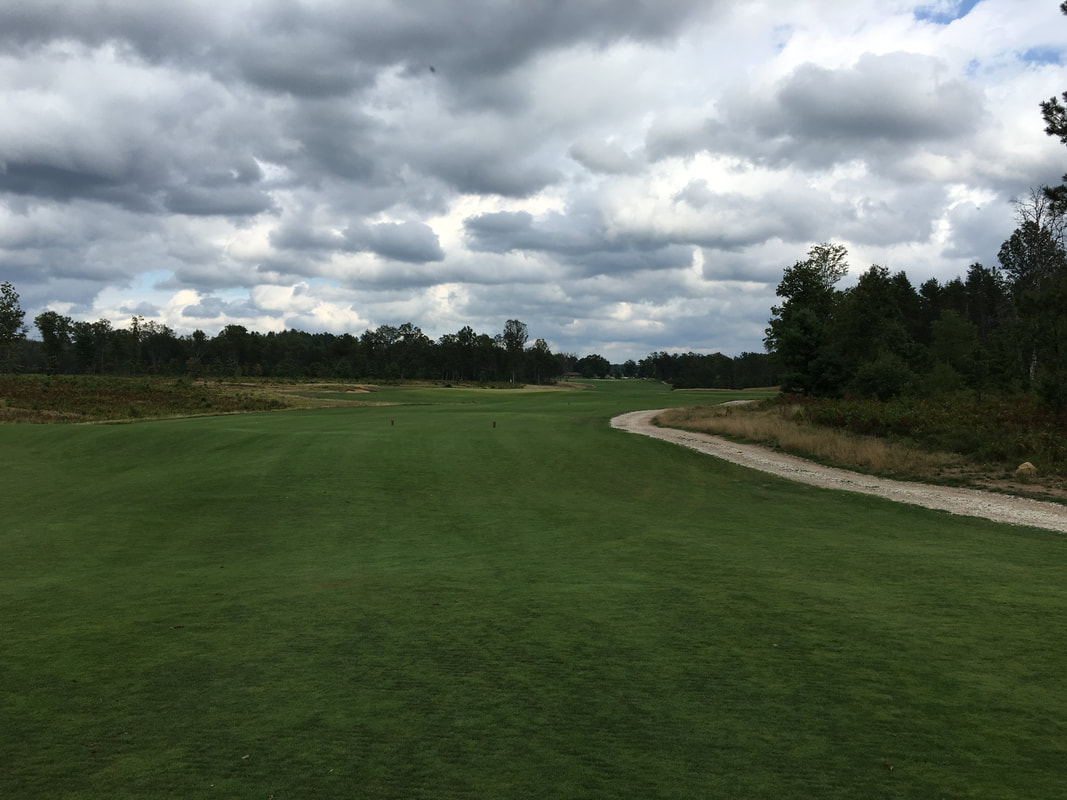
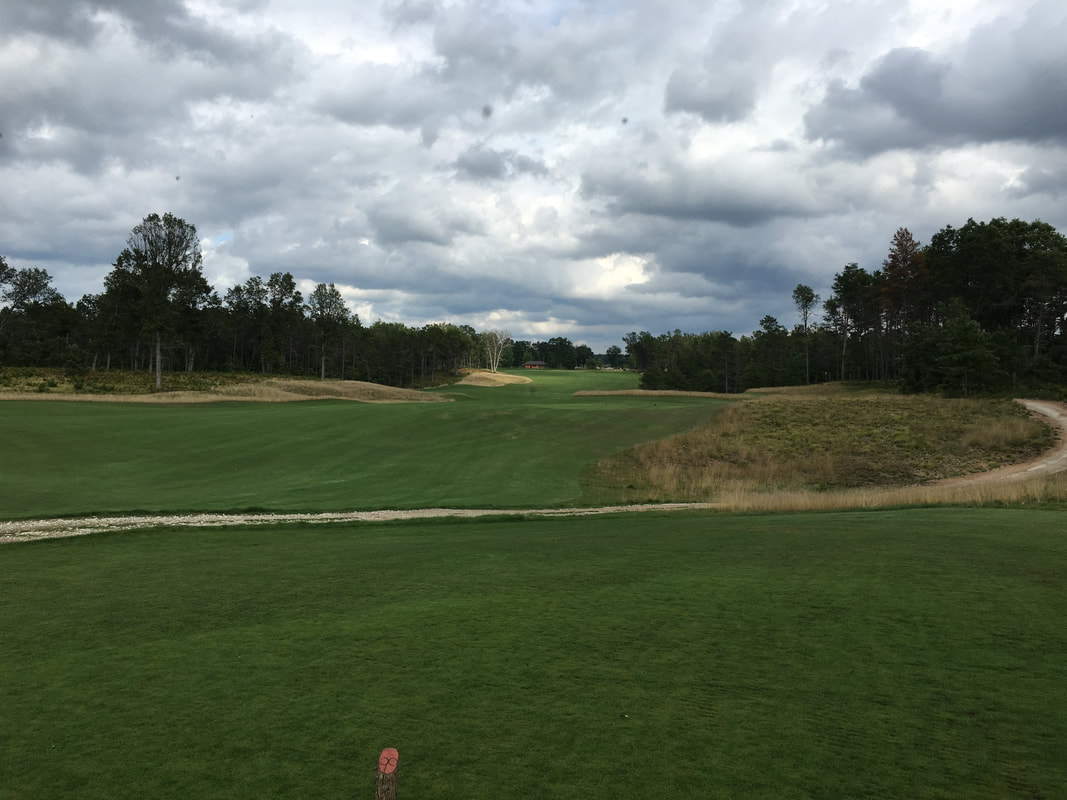
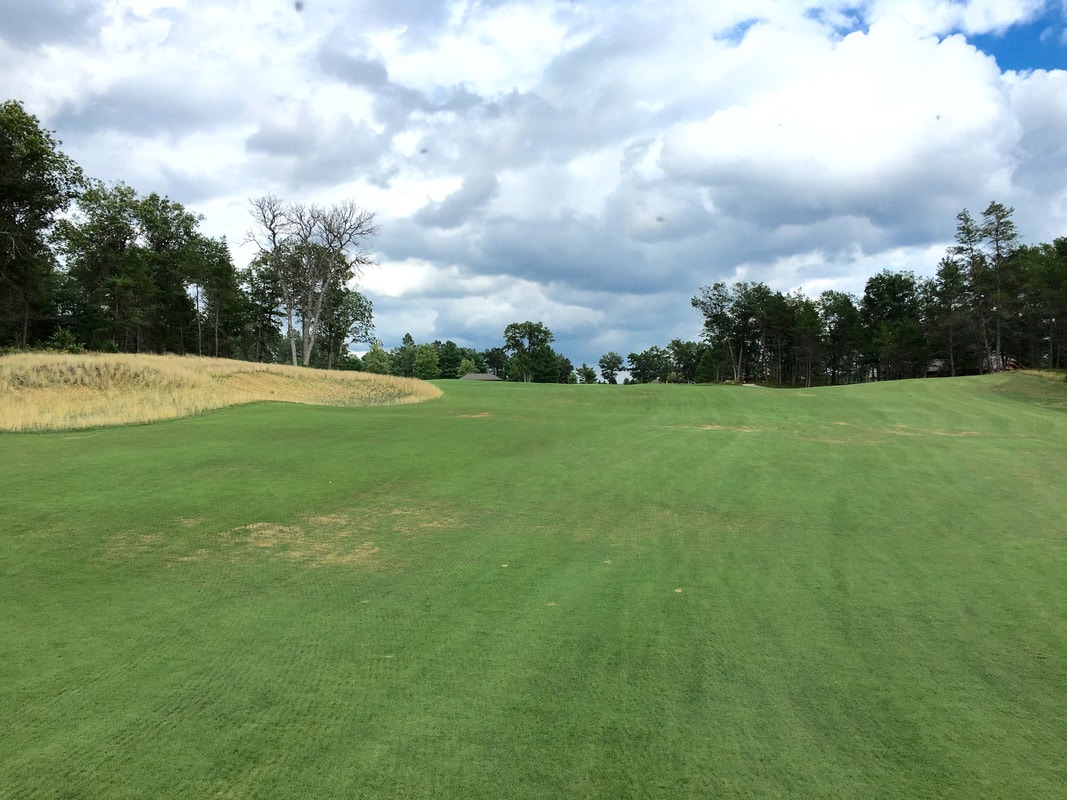
 RSS Feed
RSS Feed